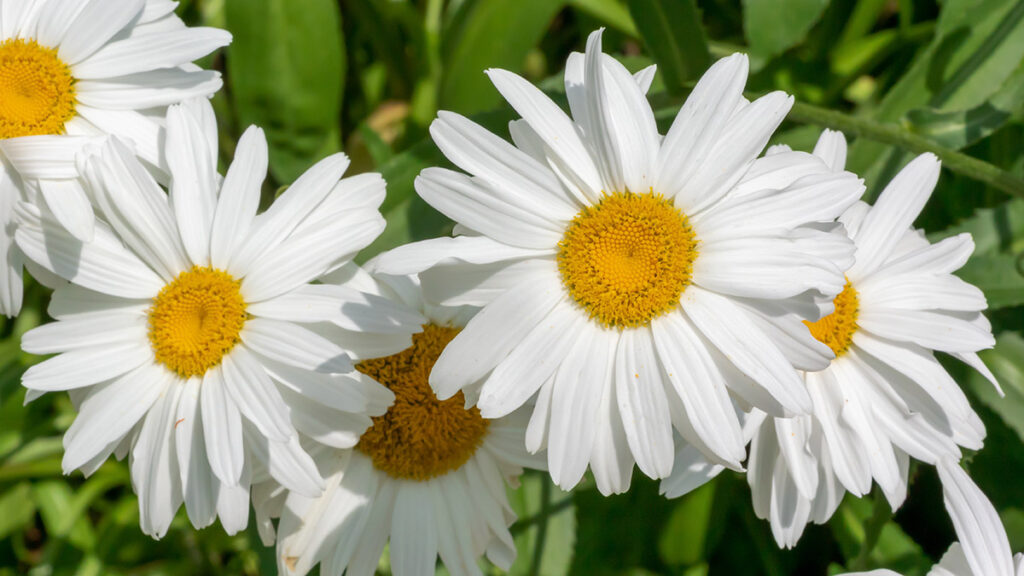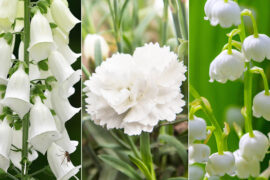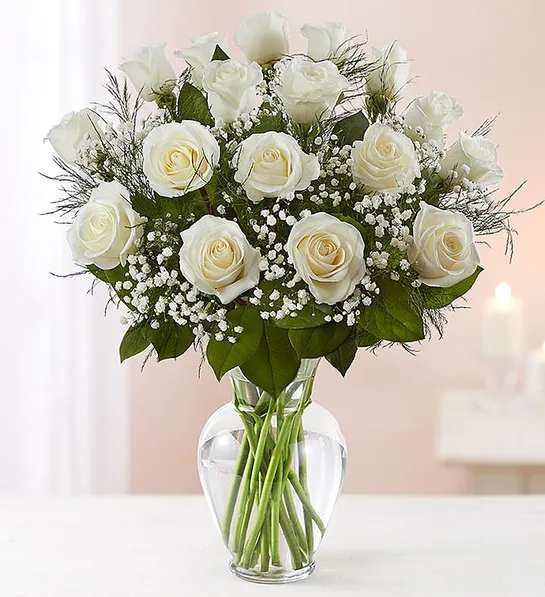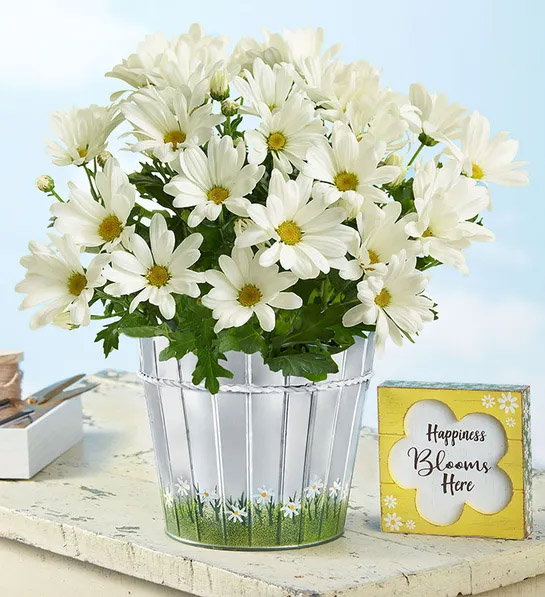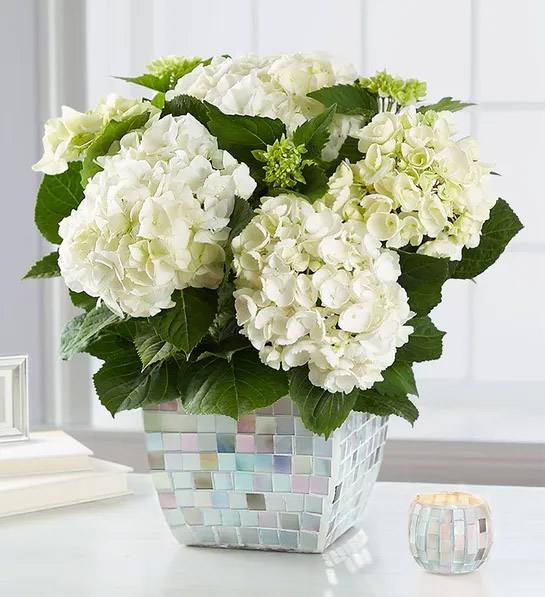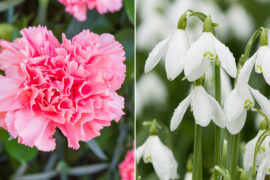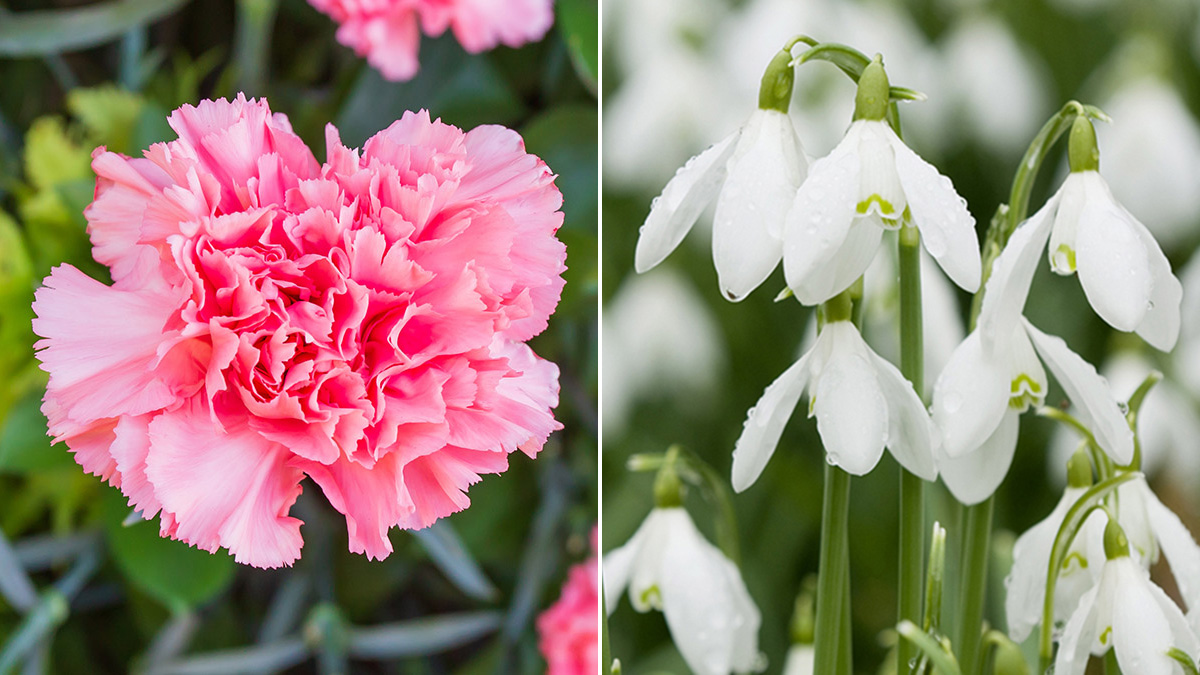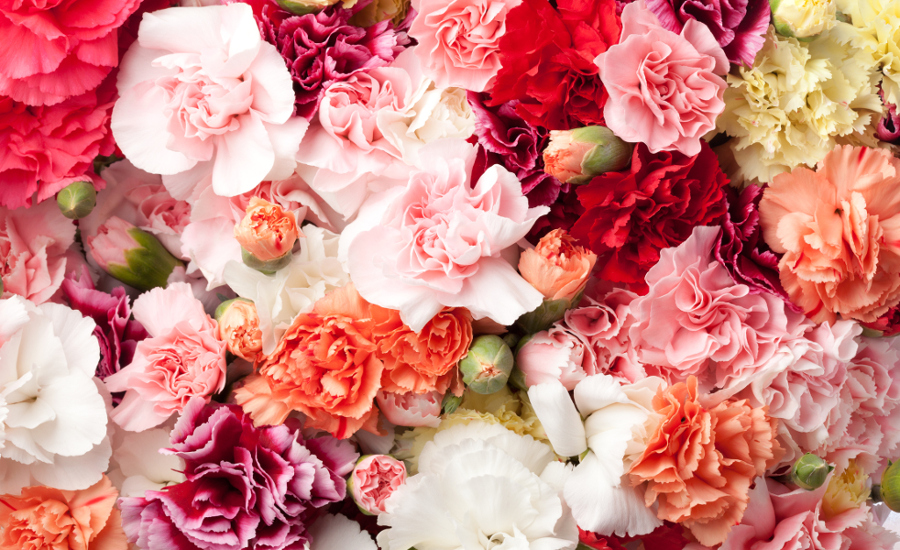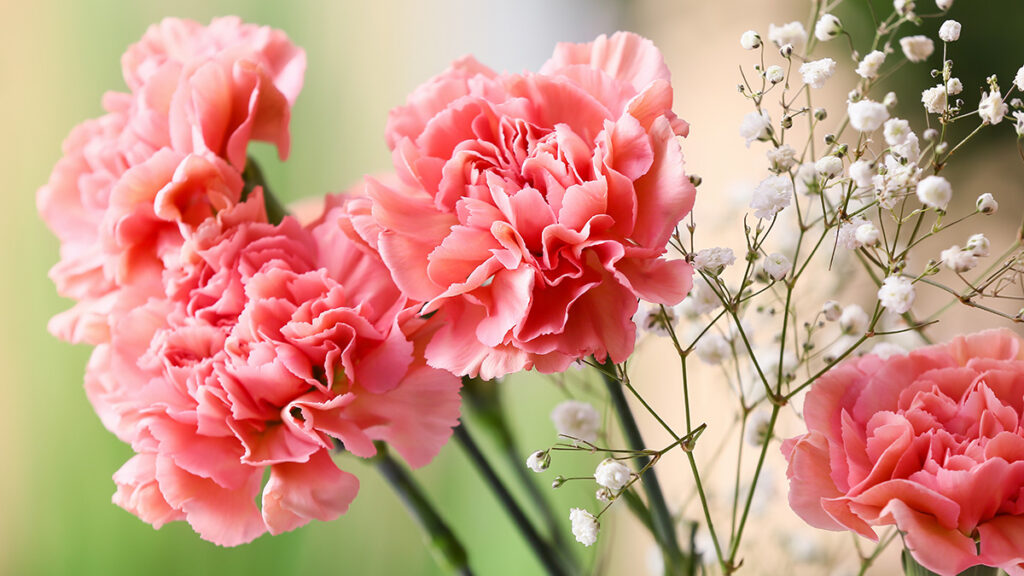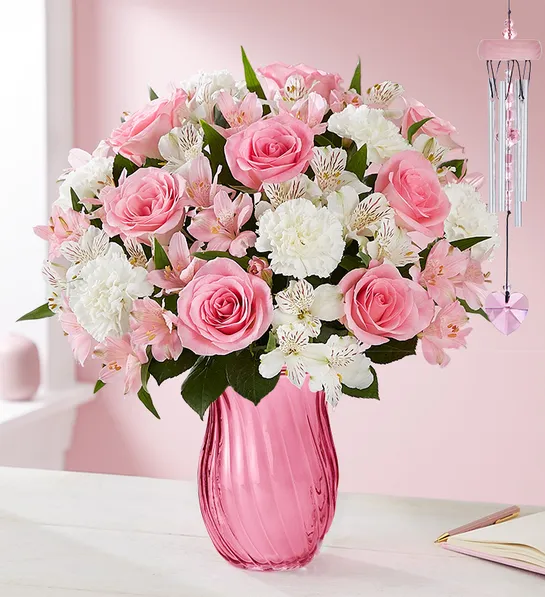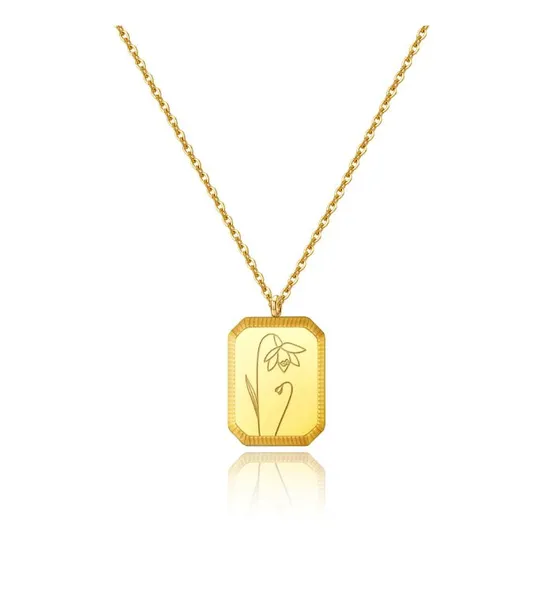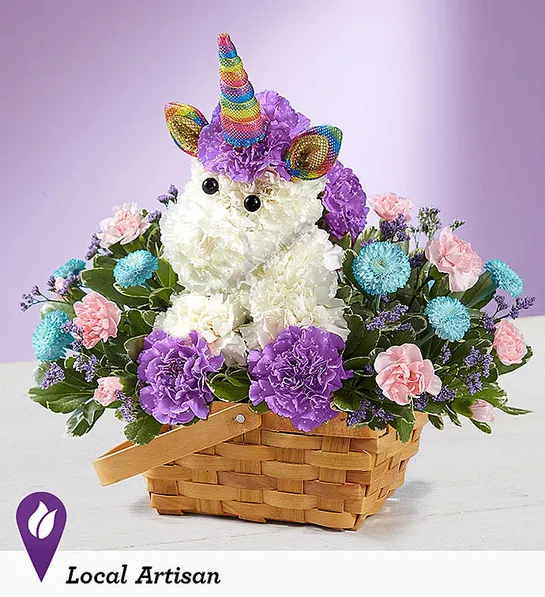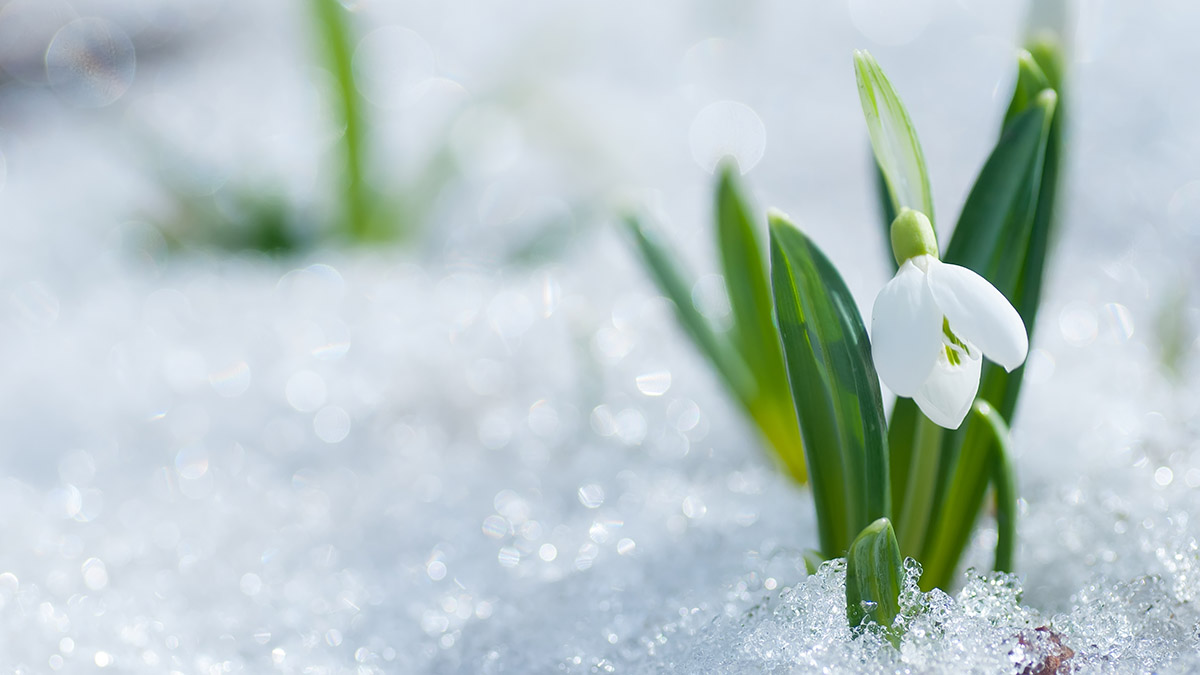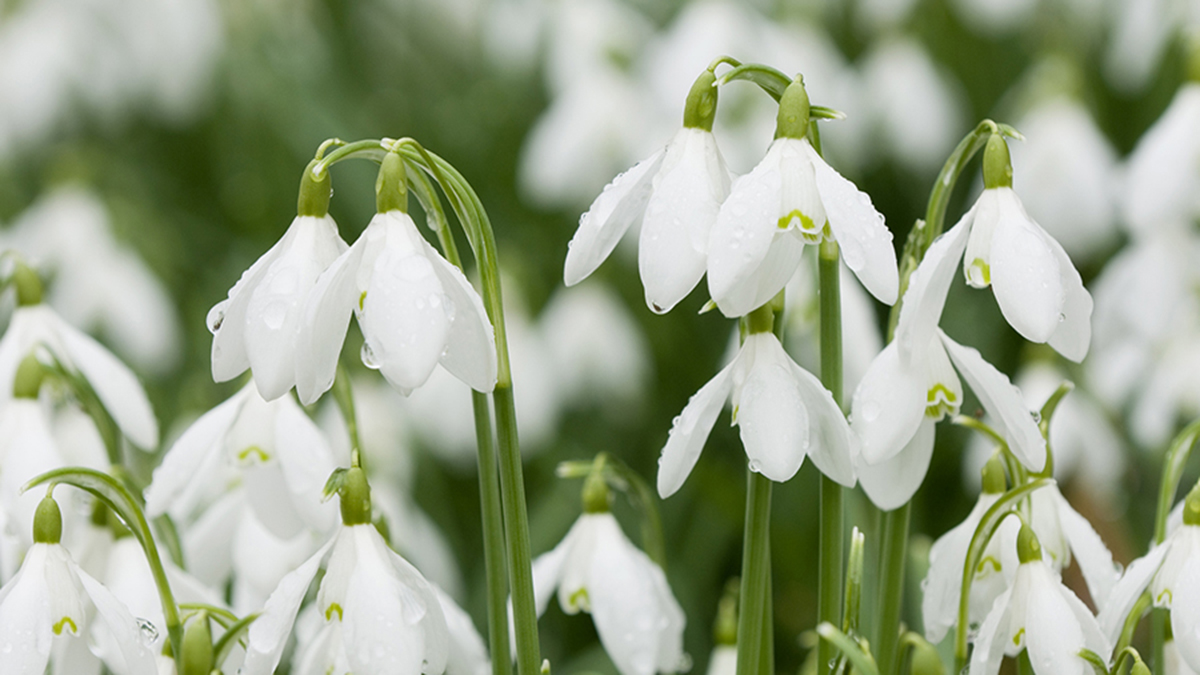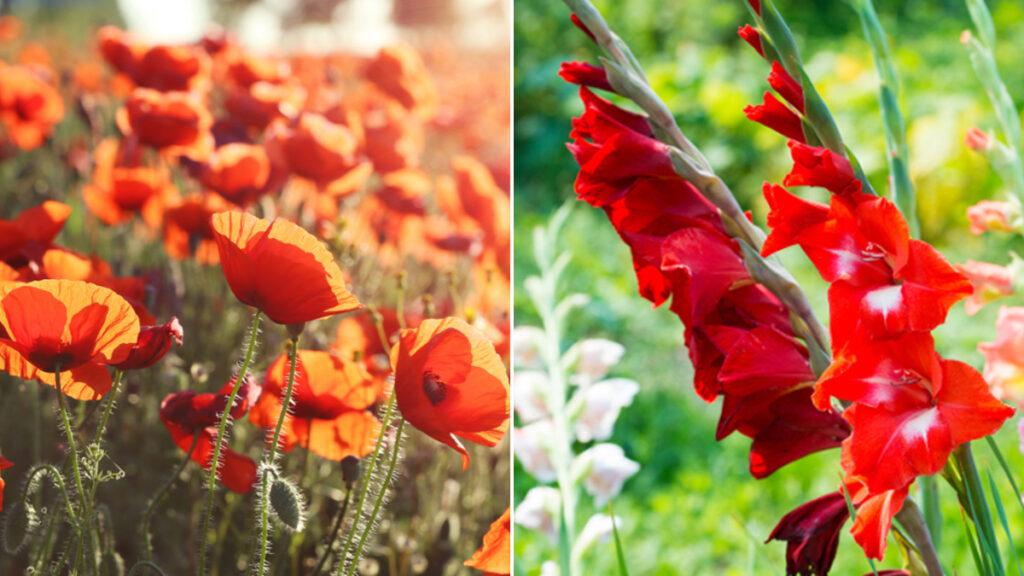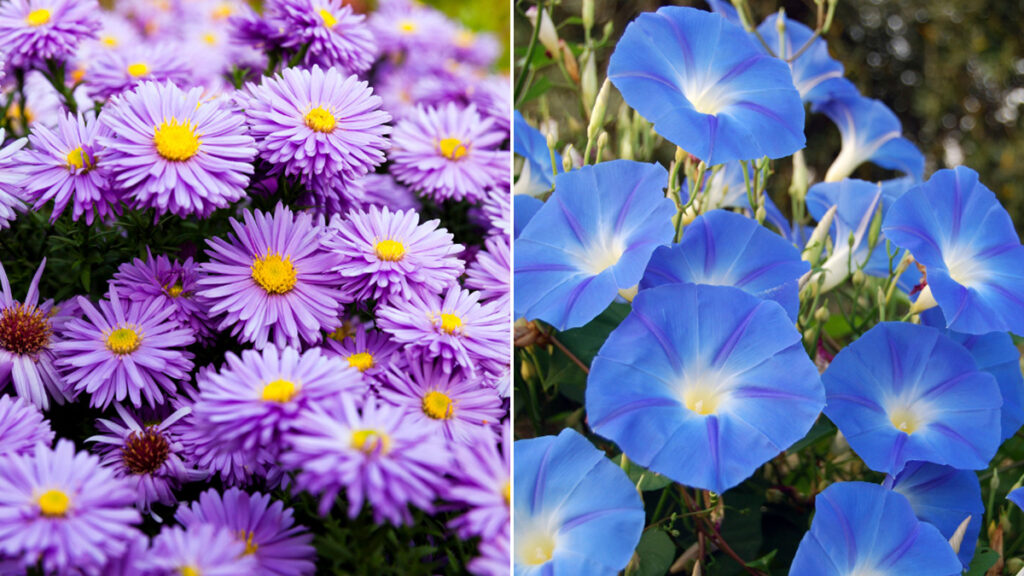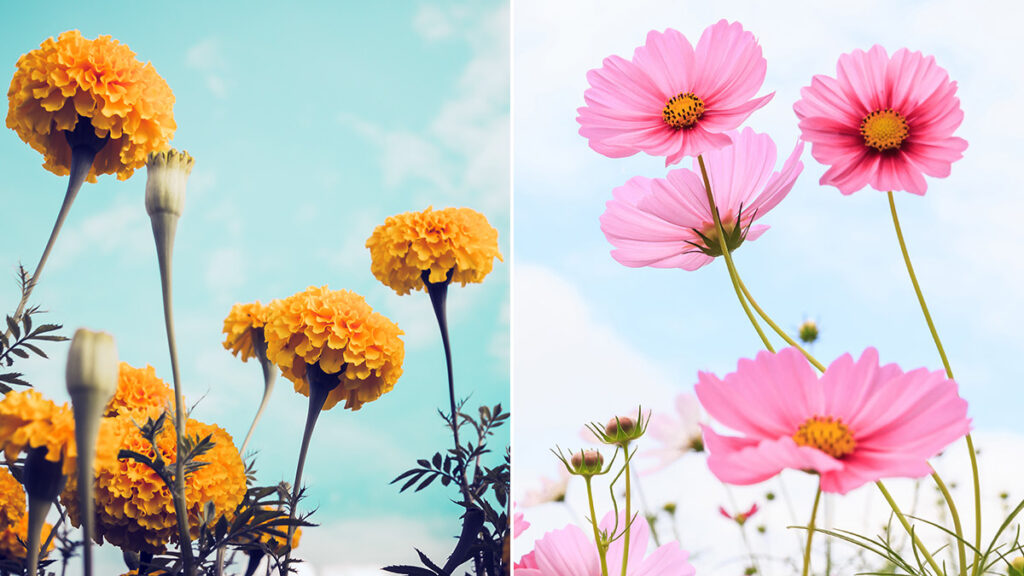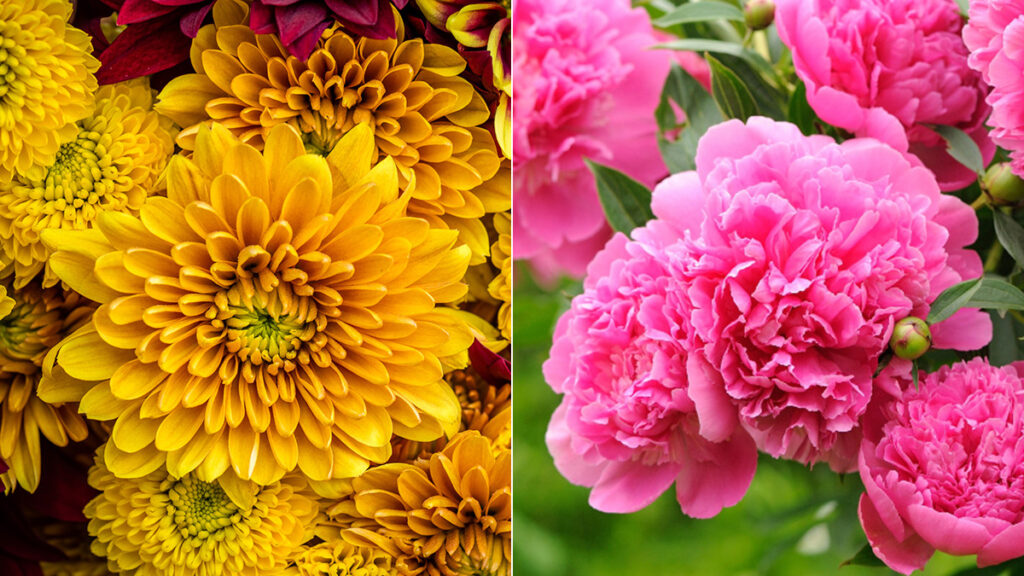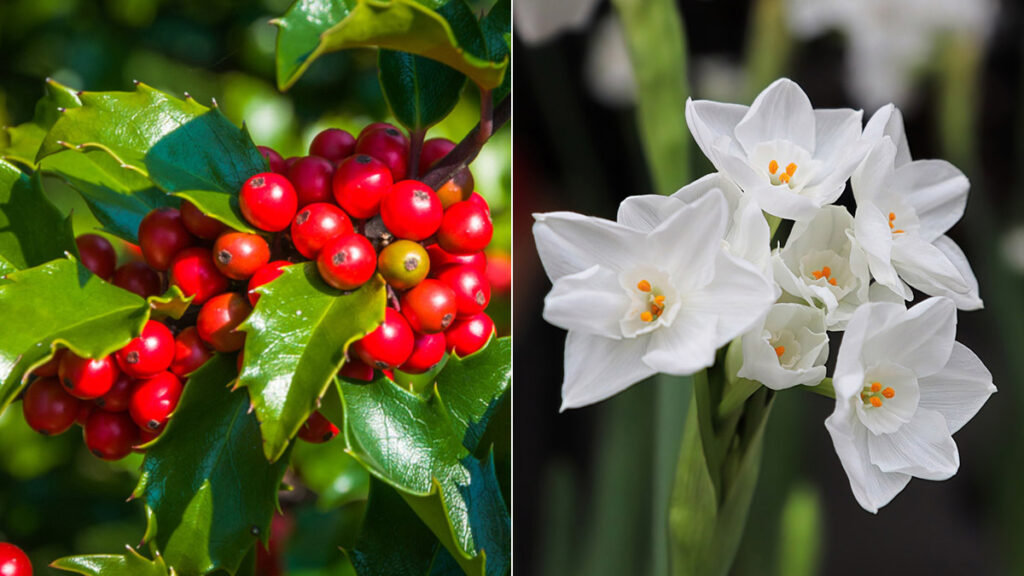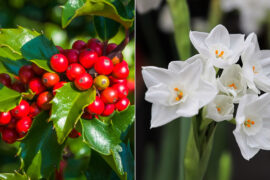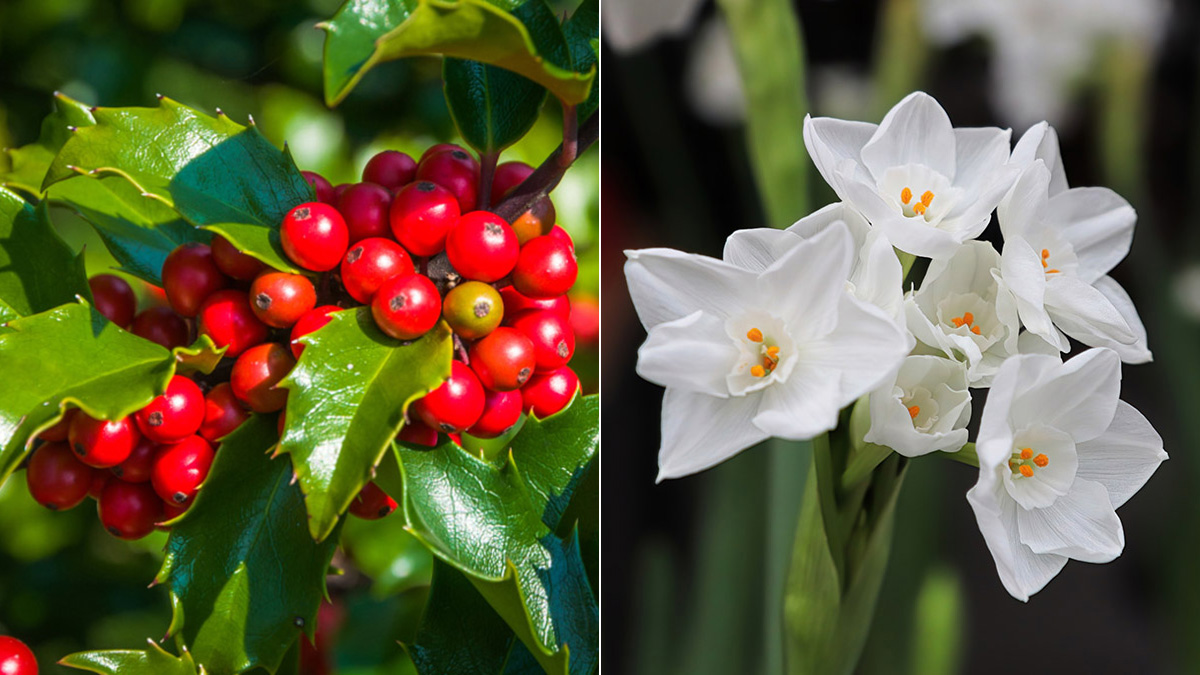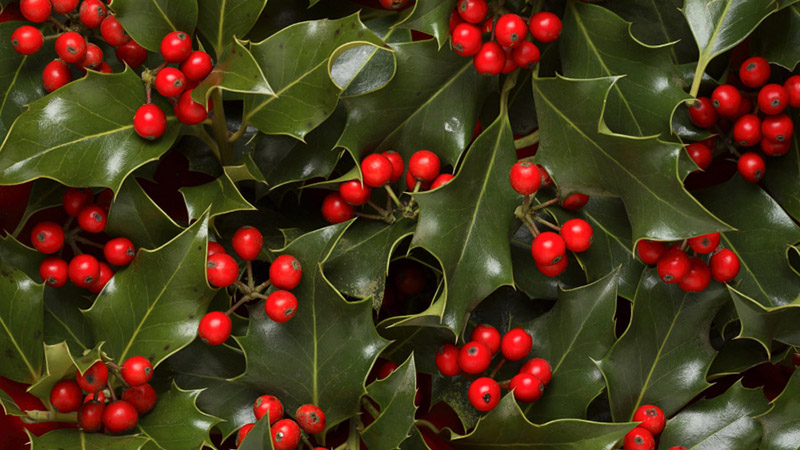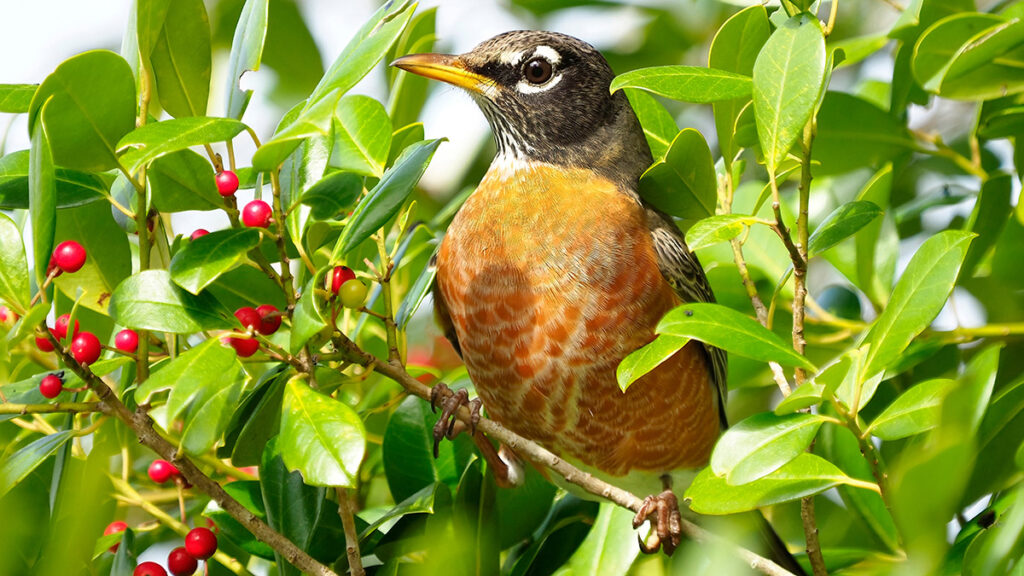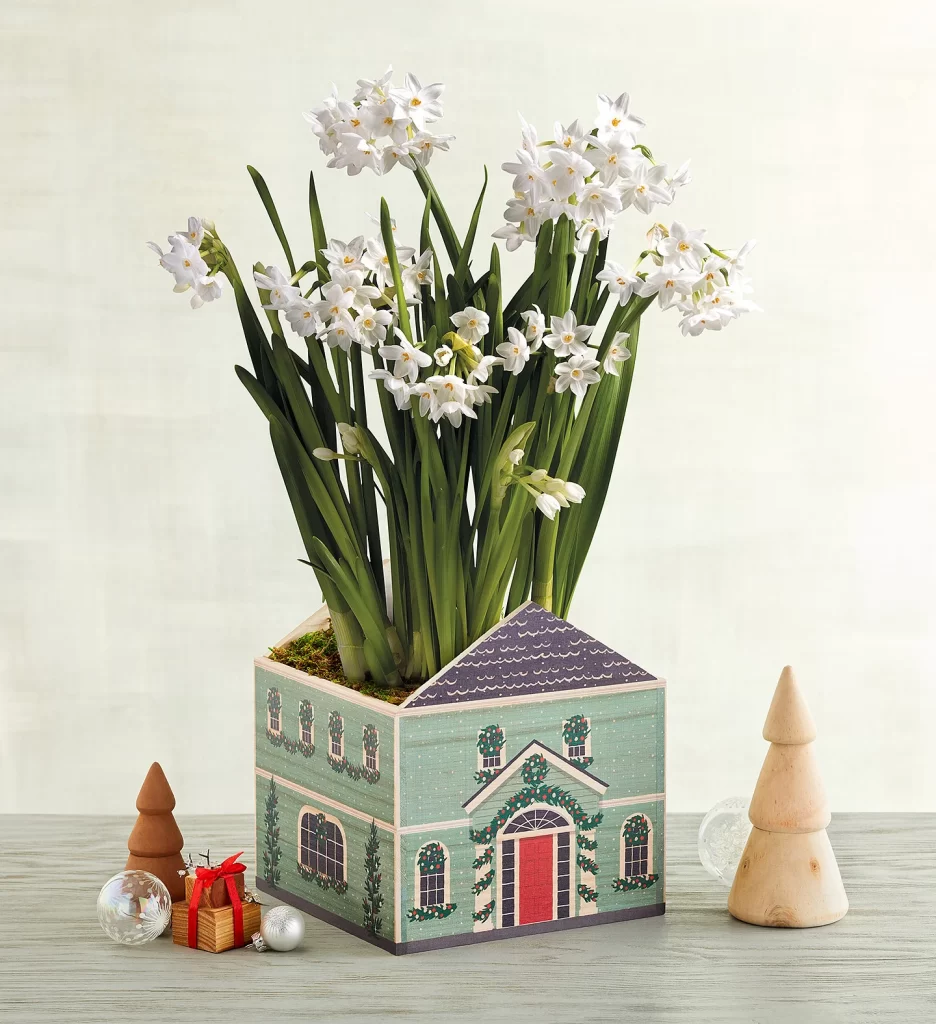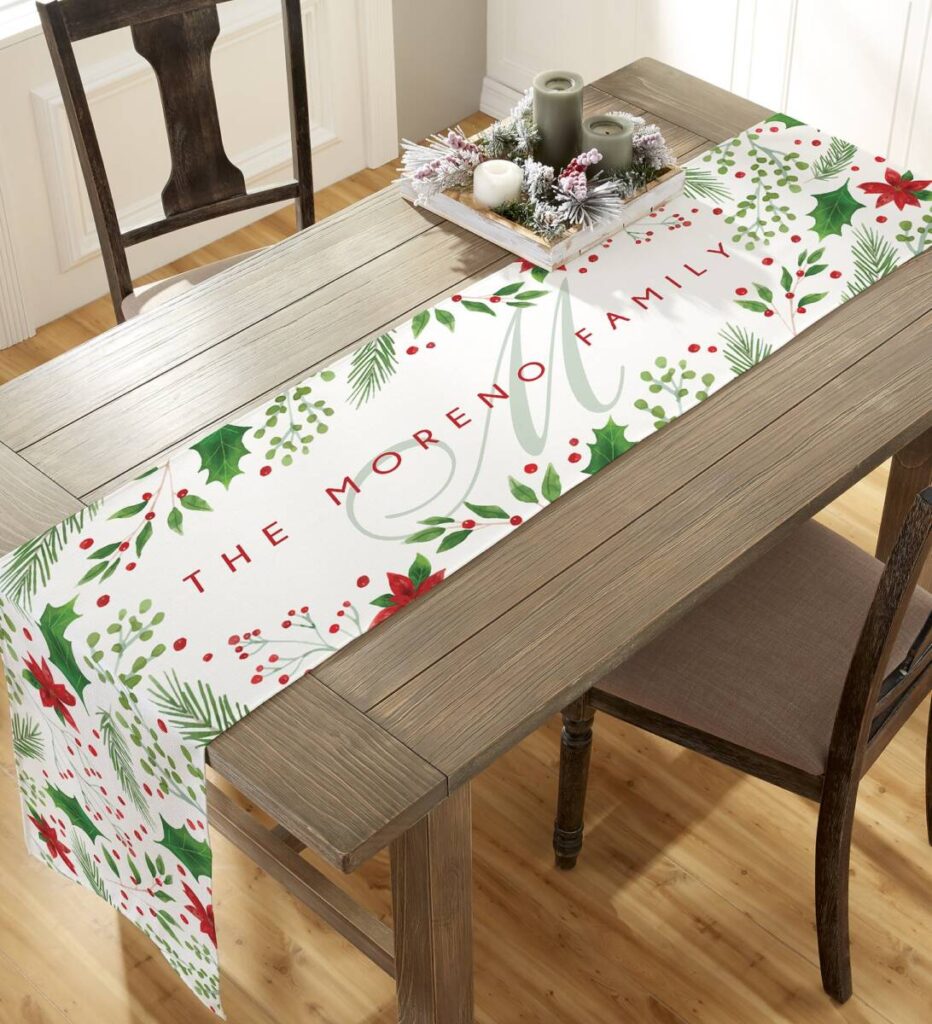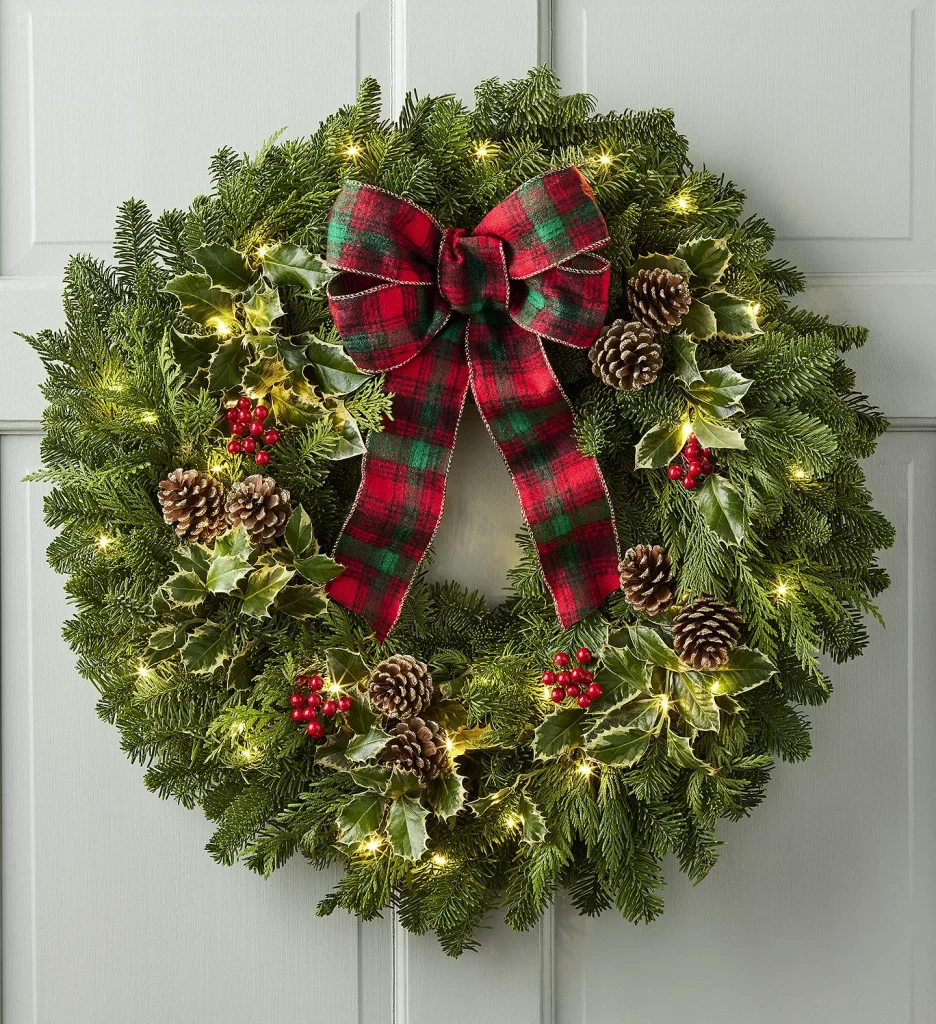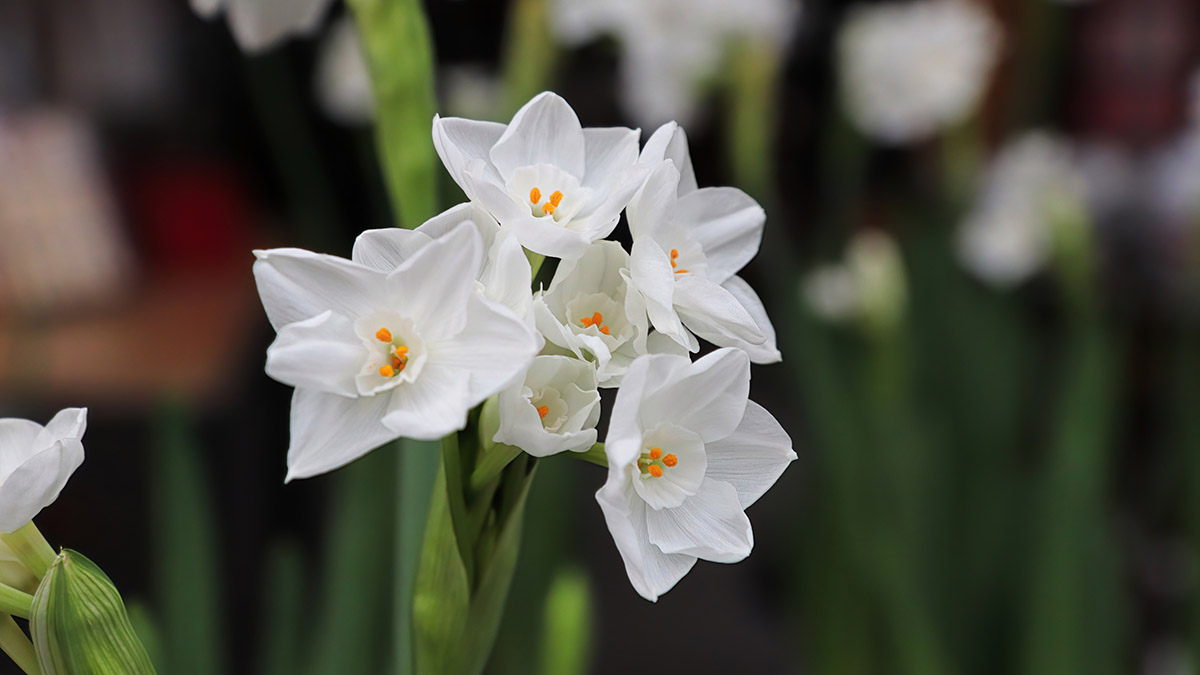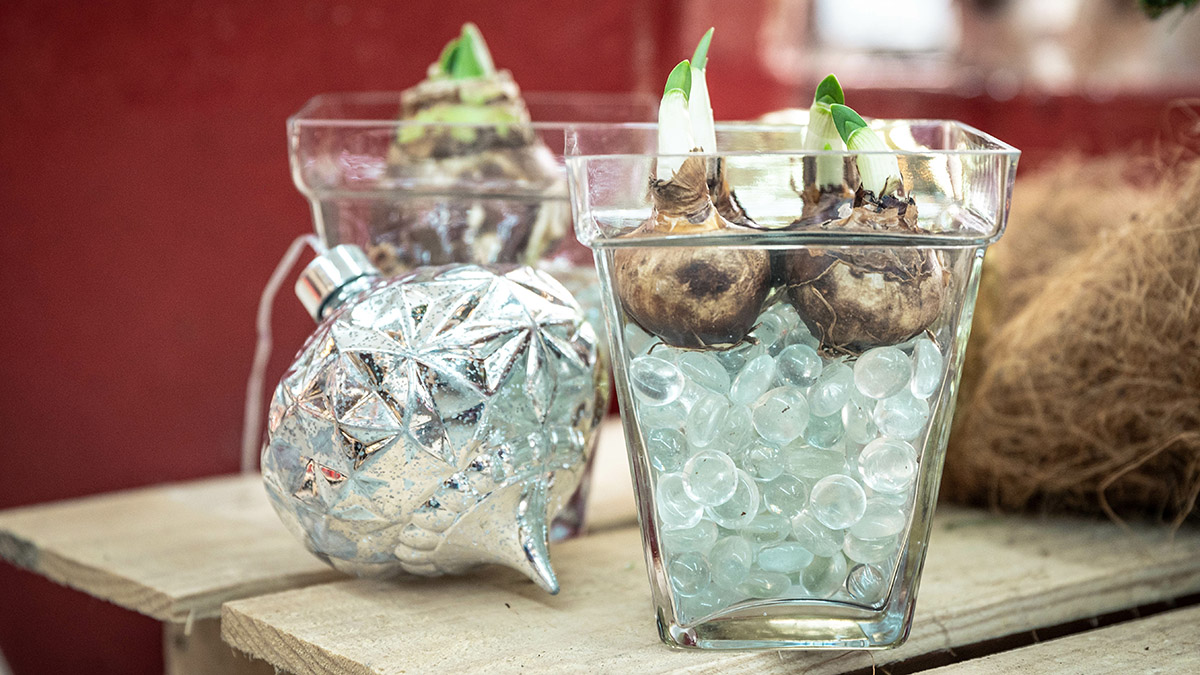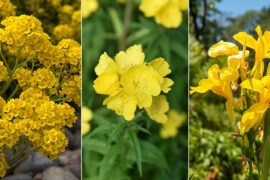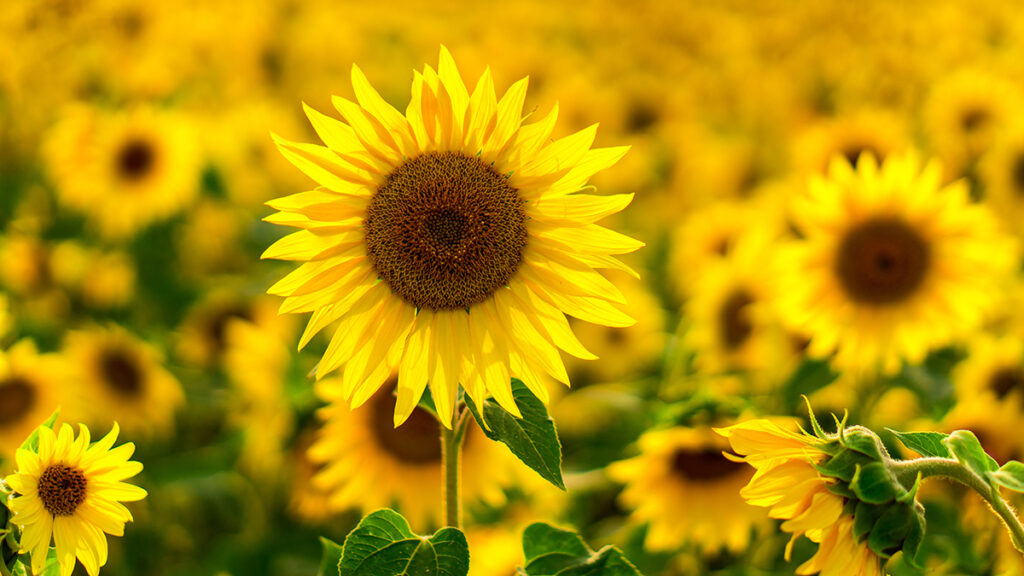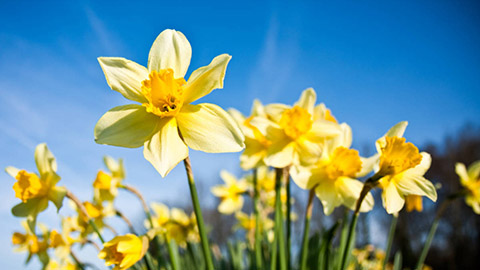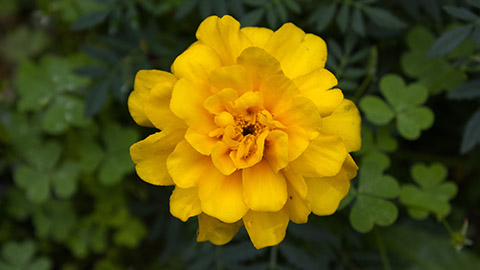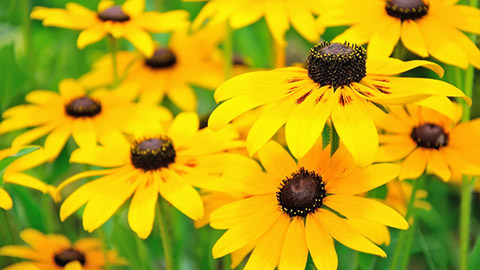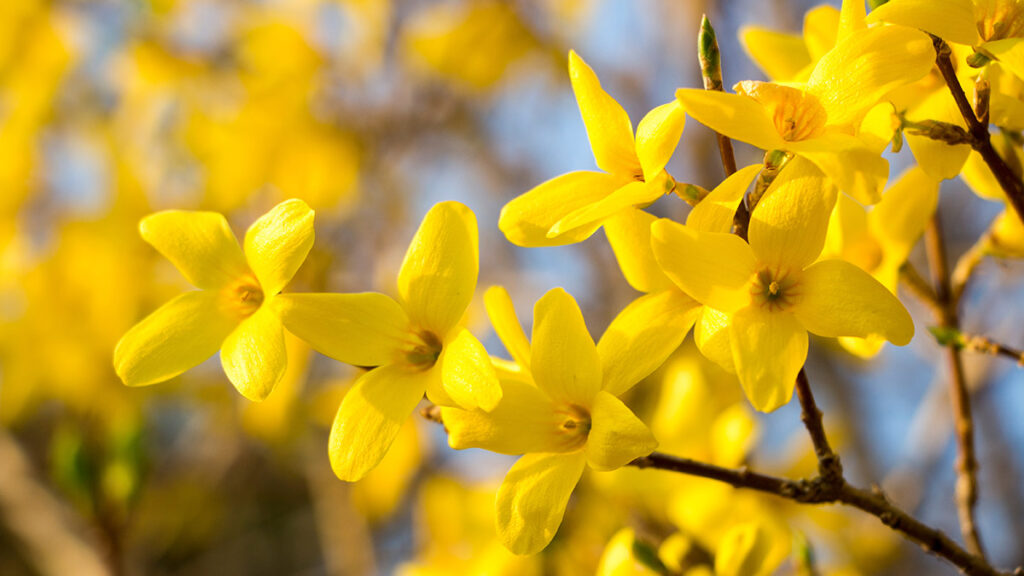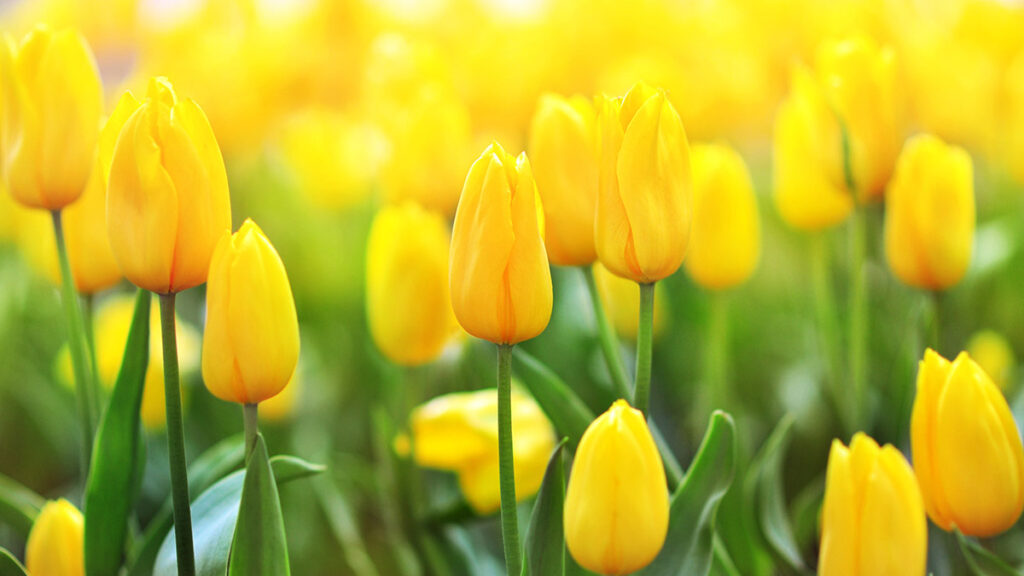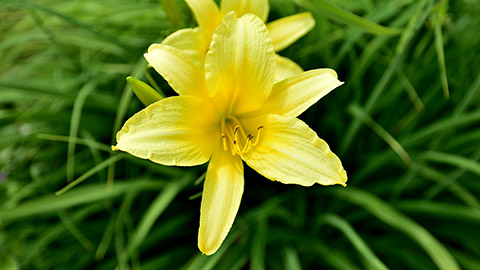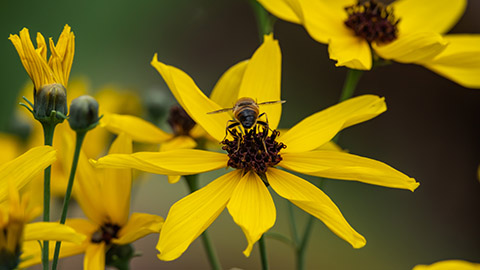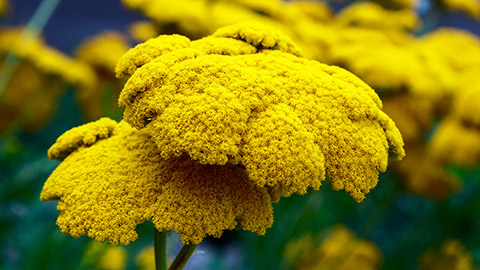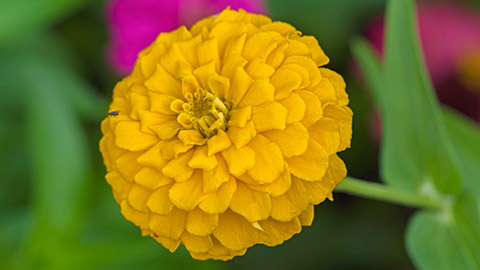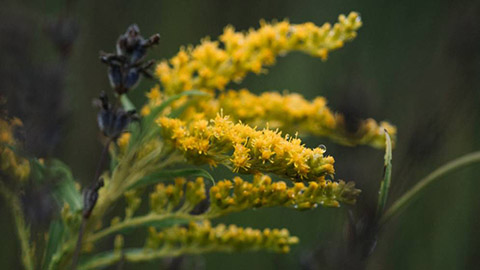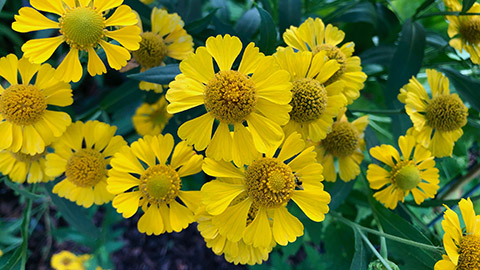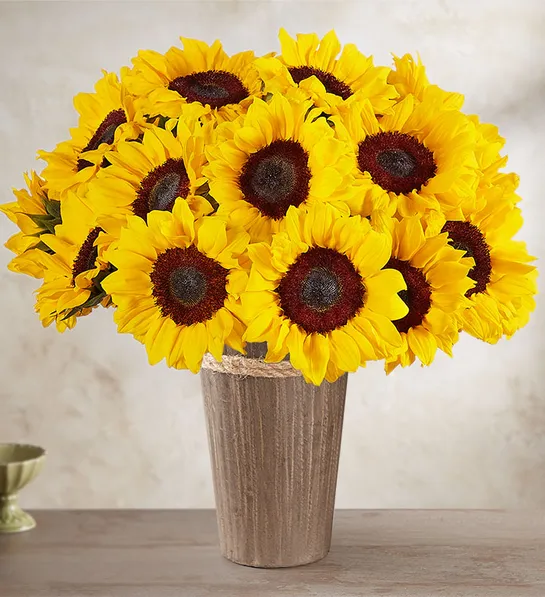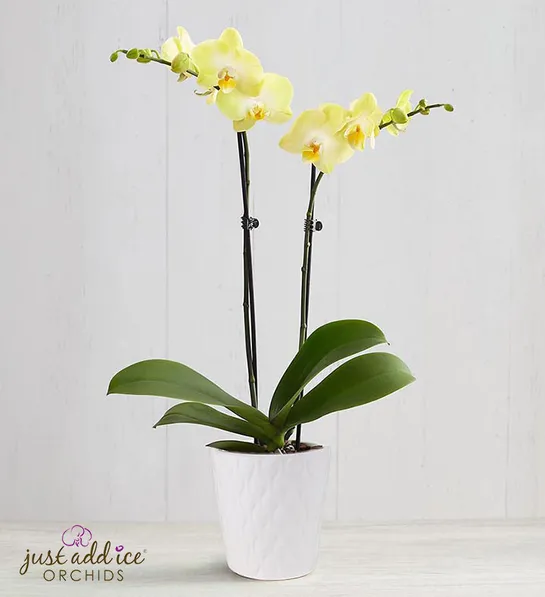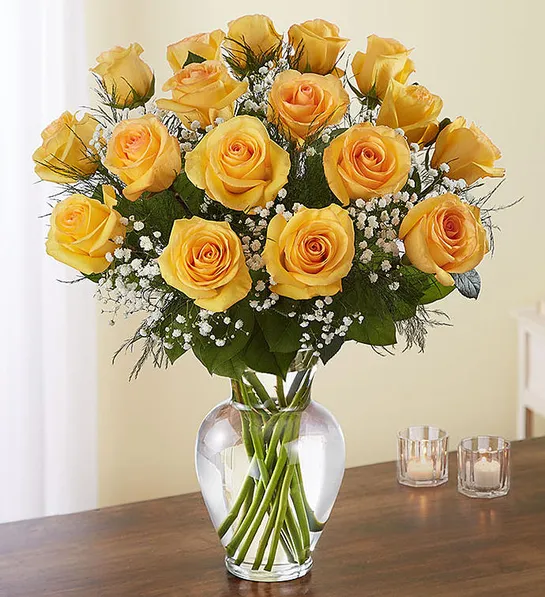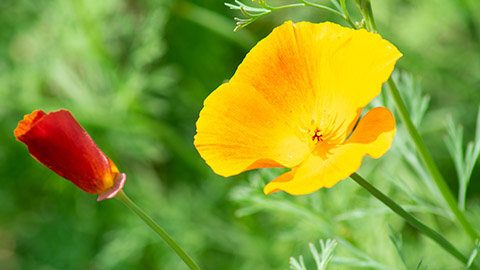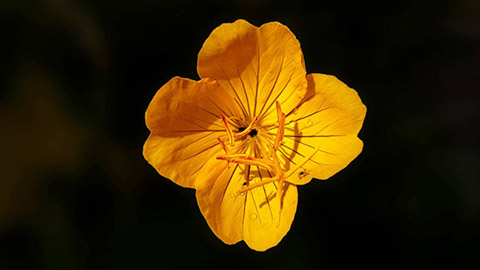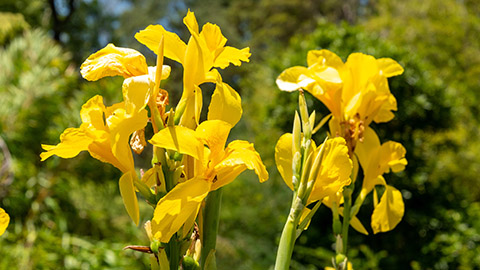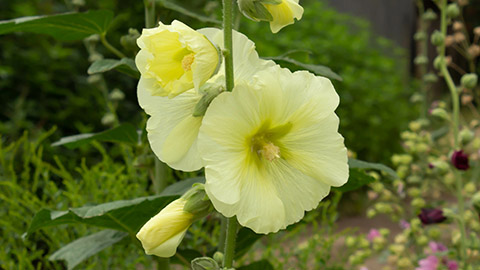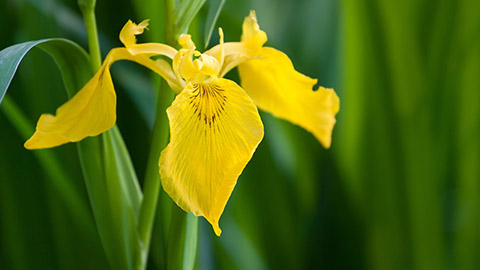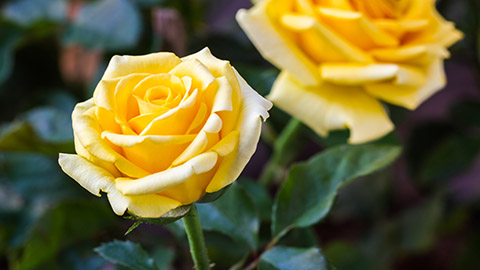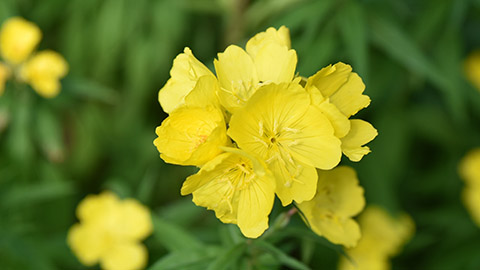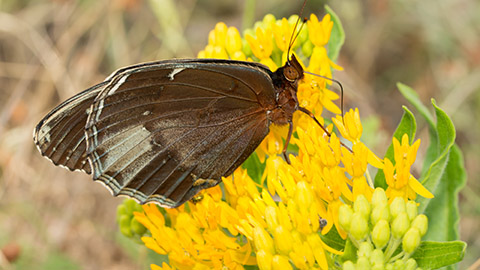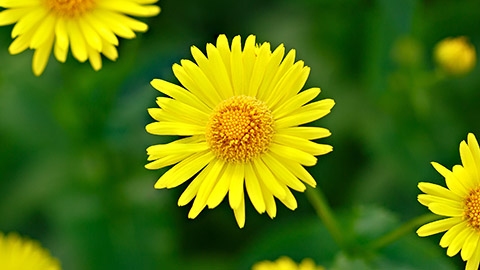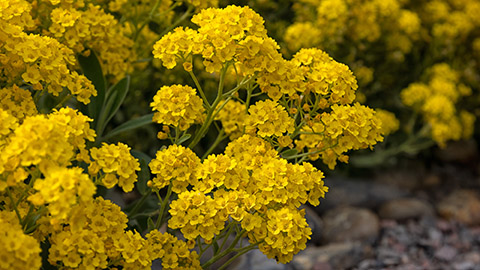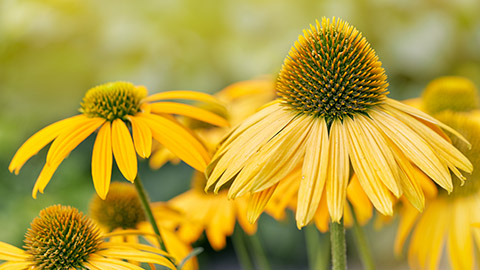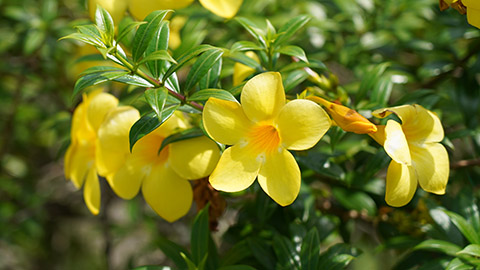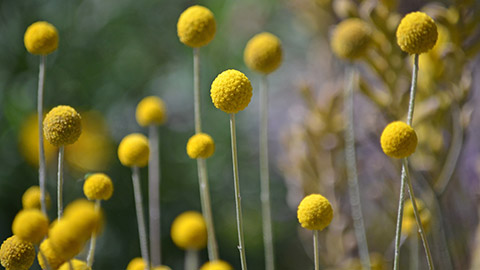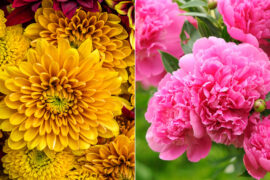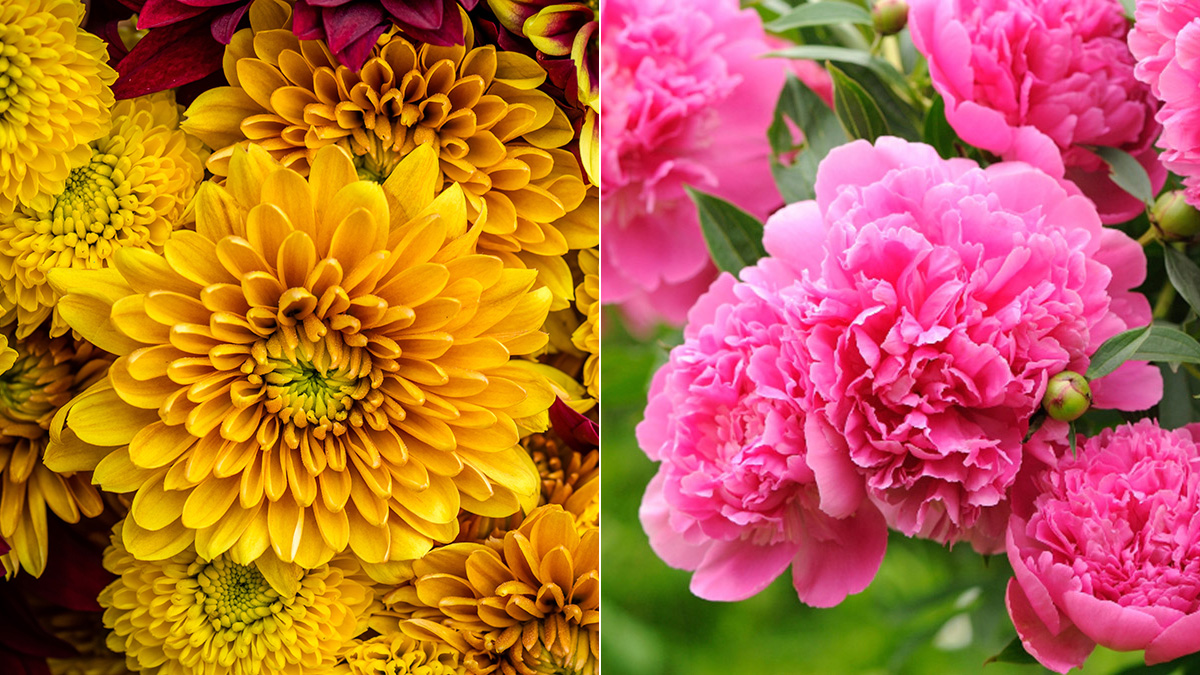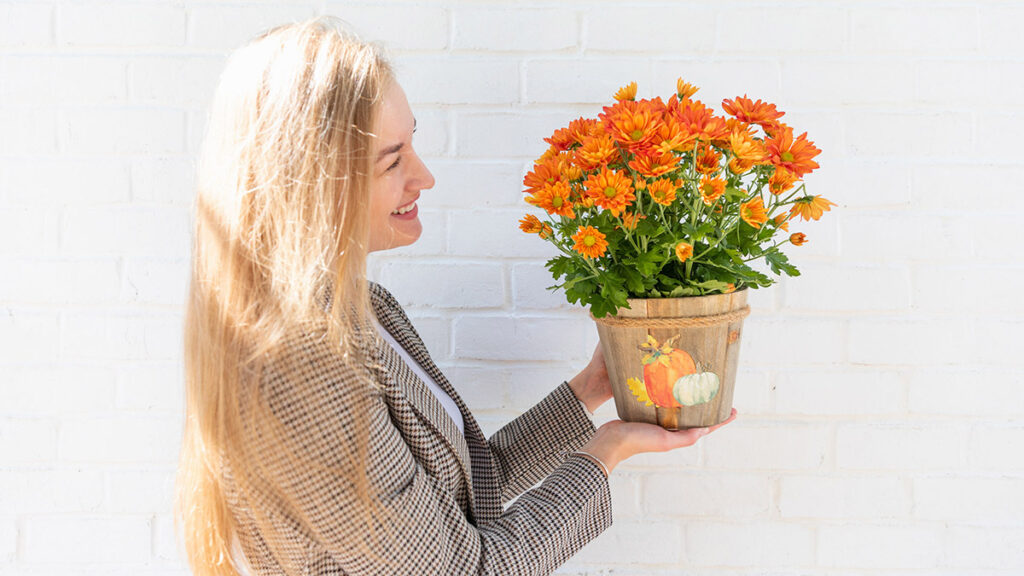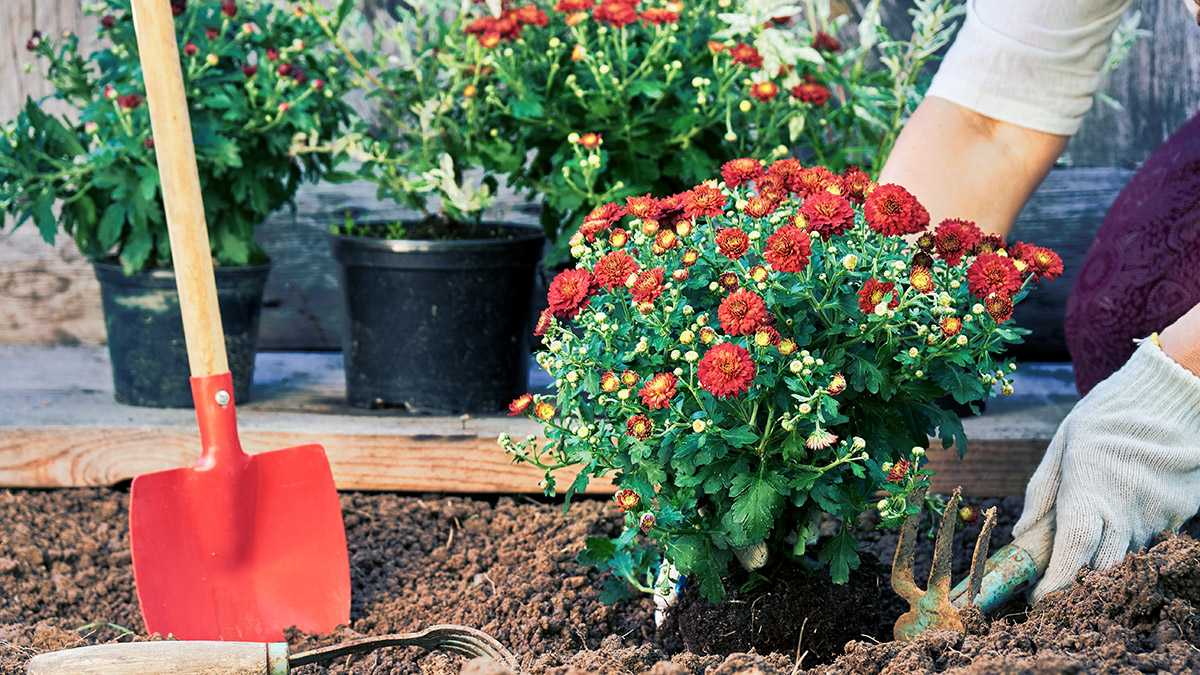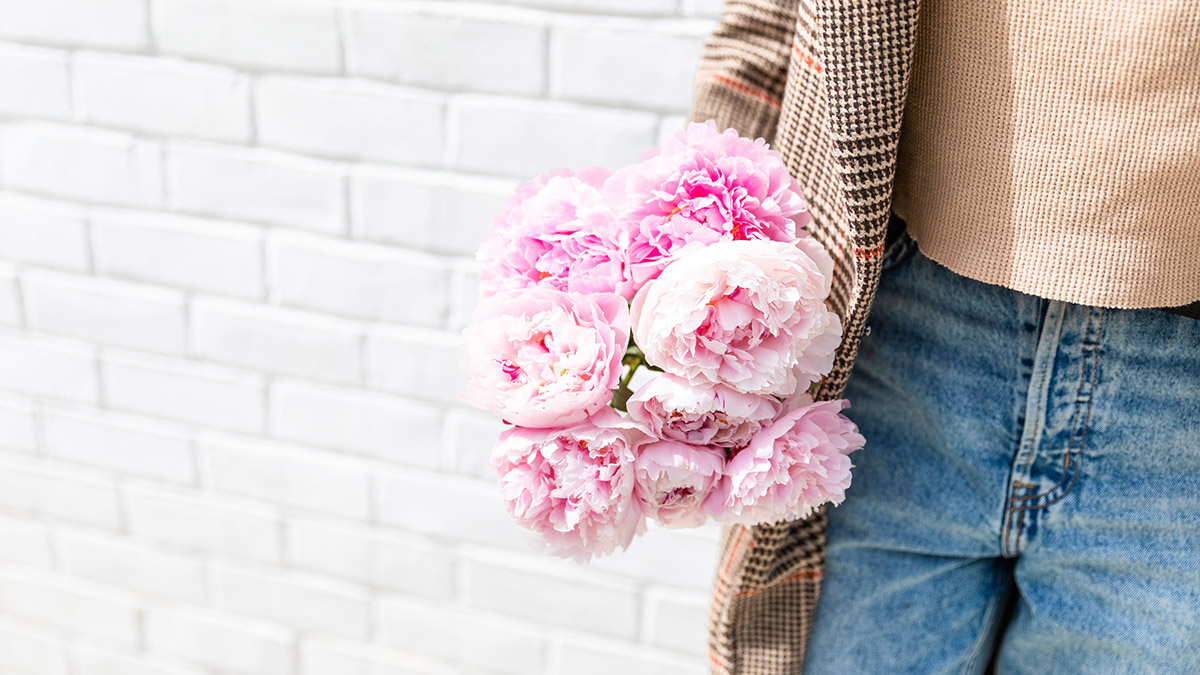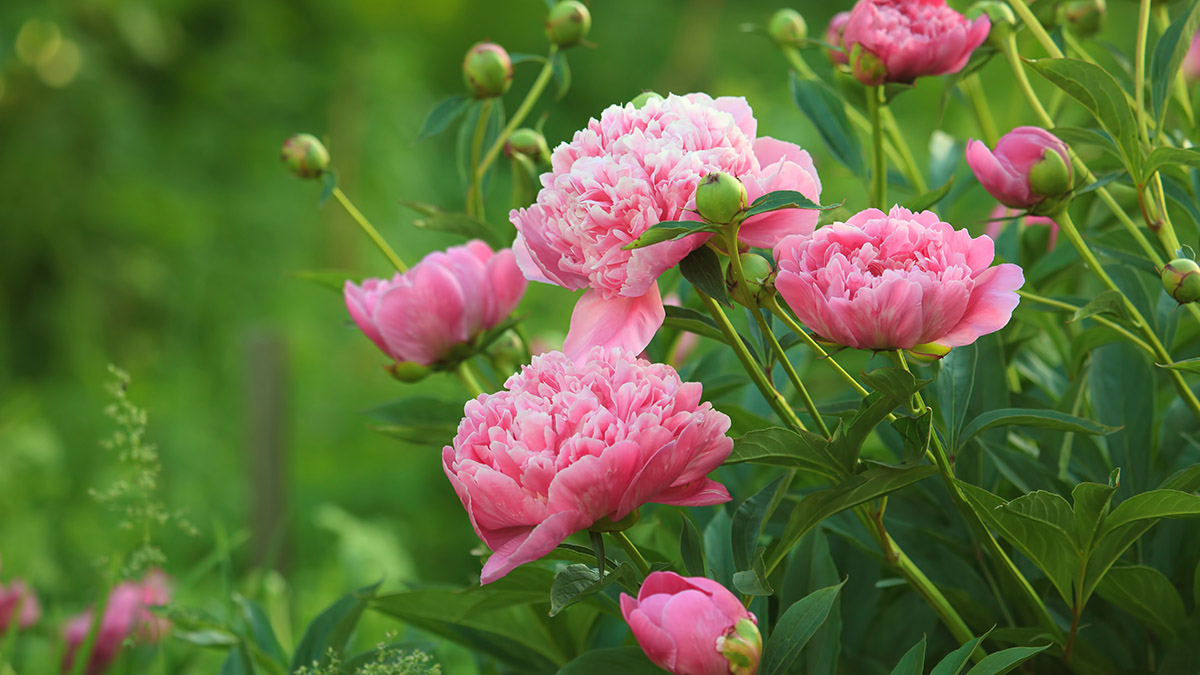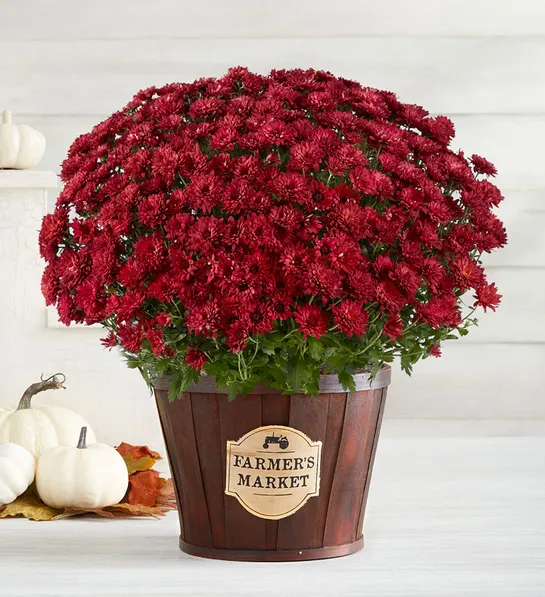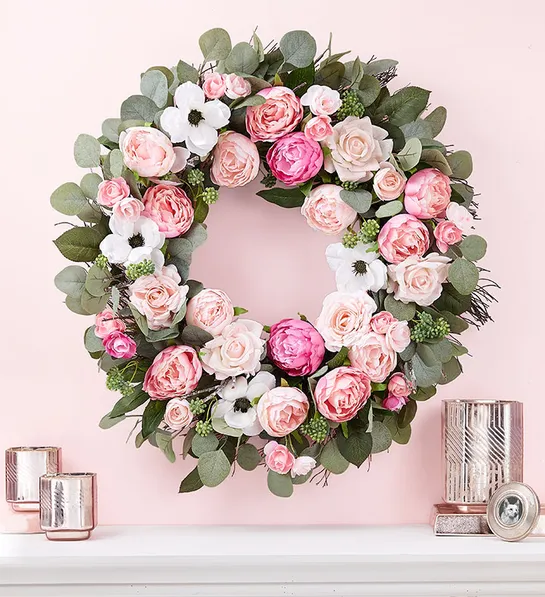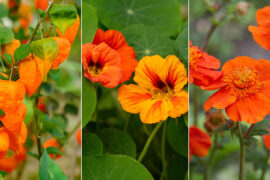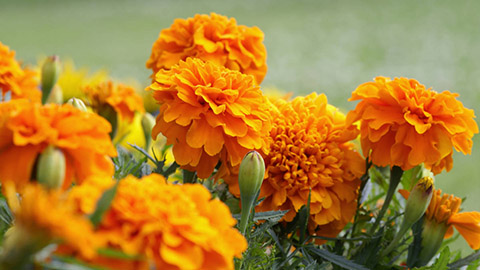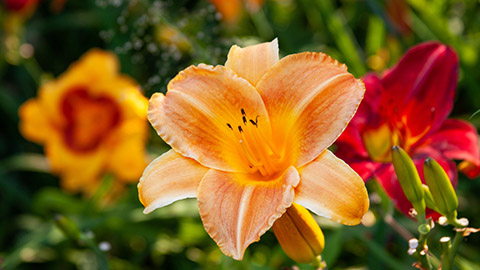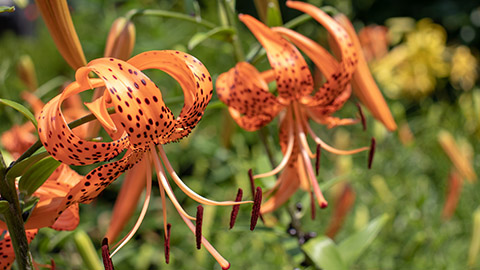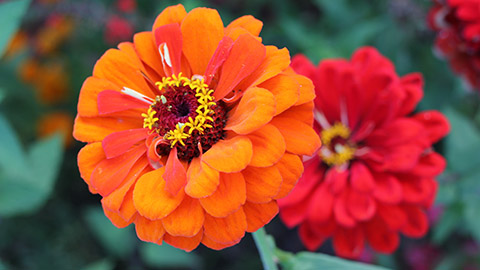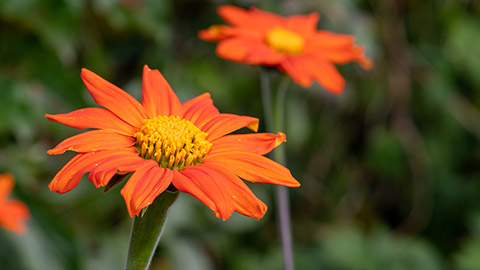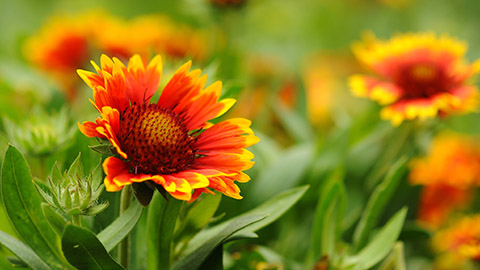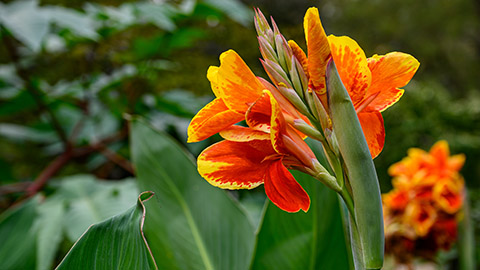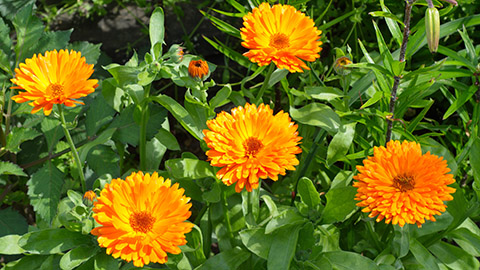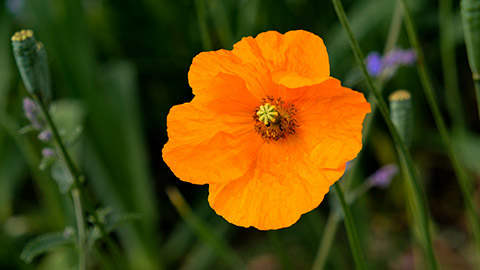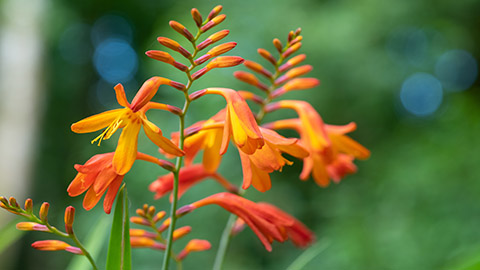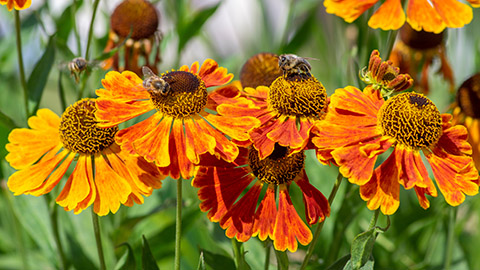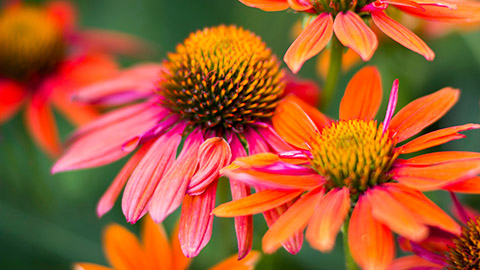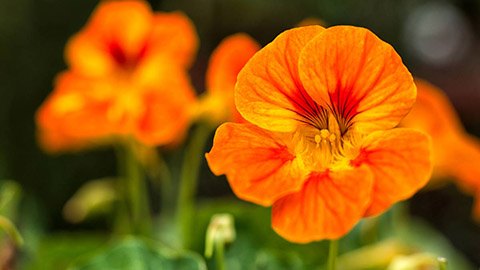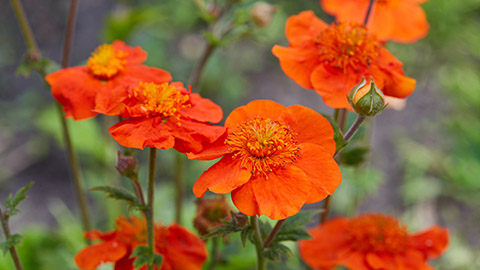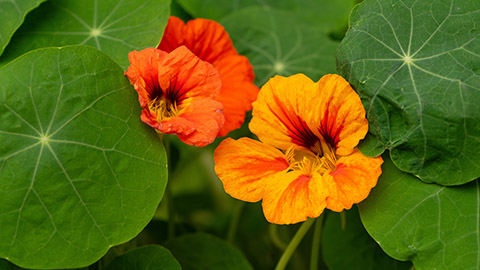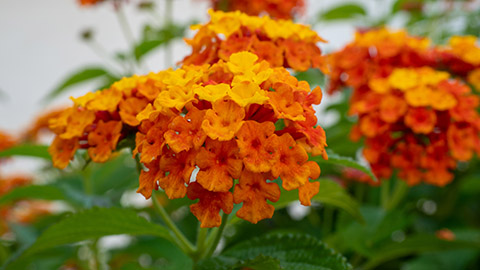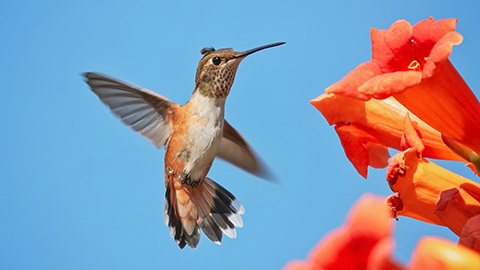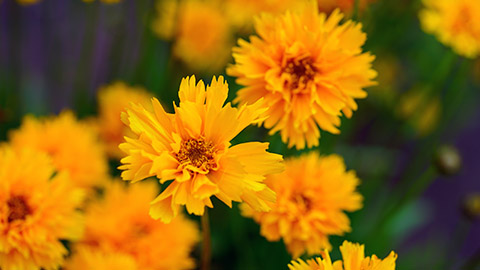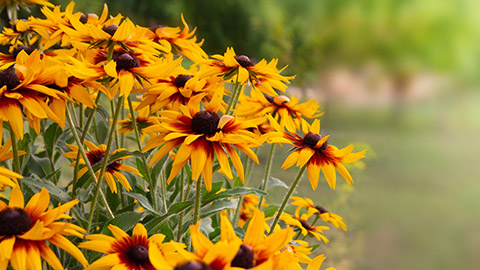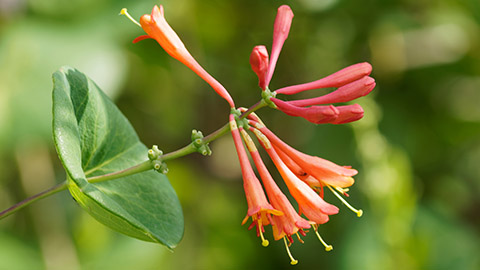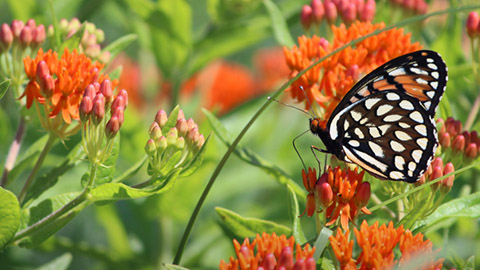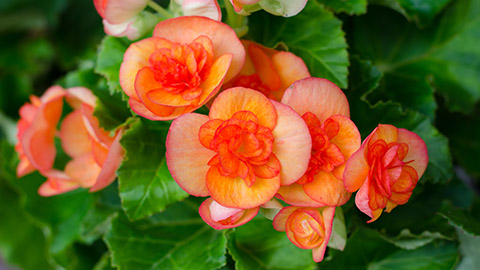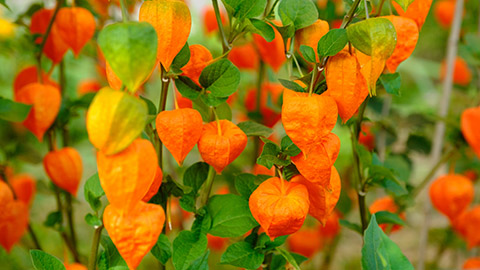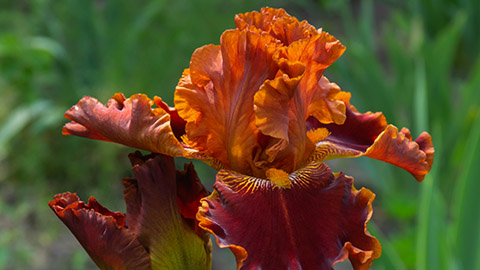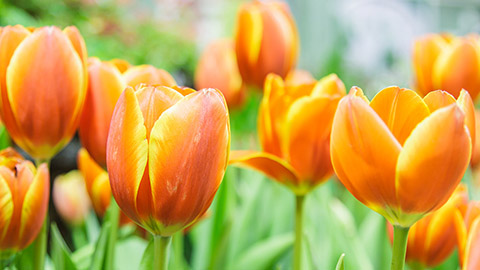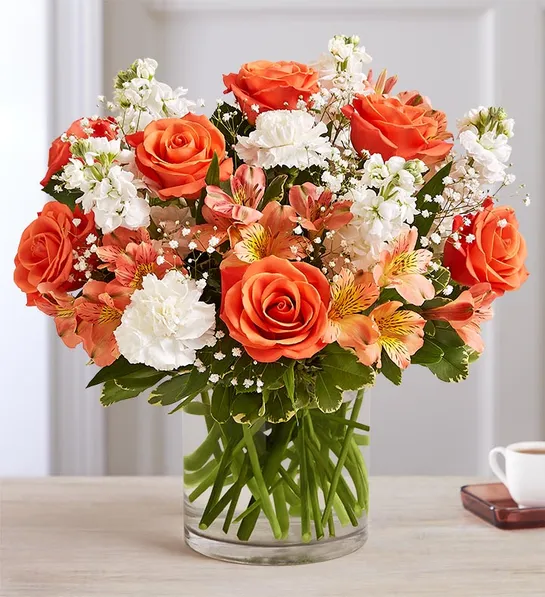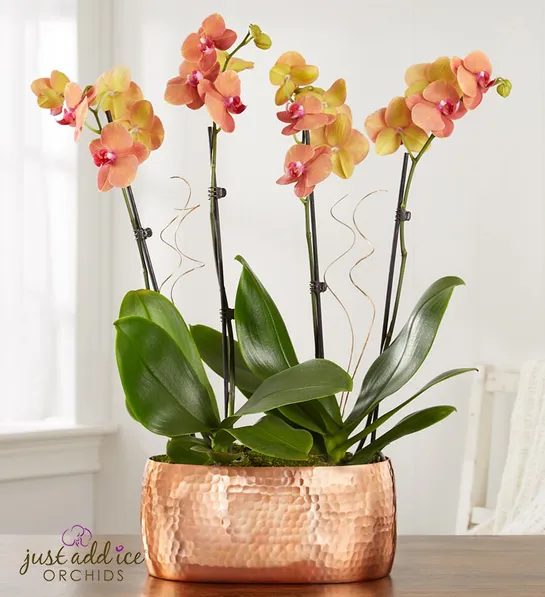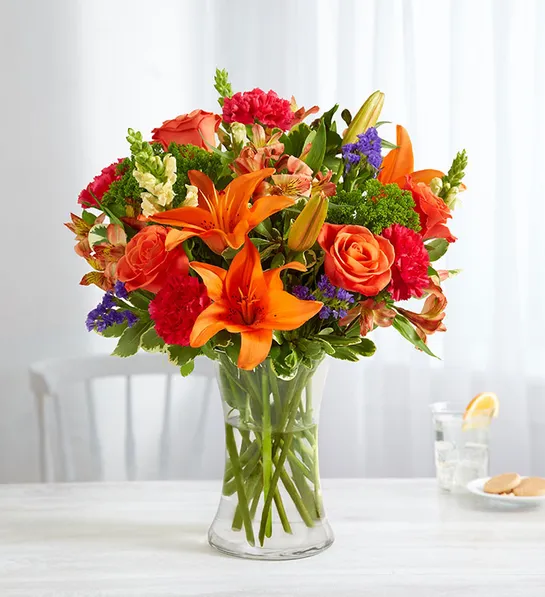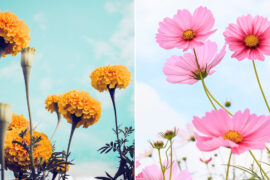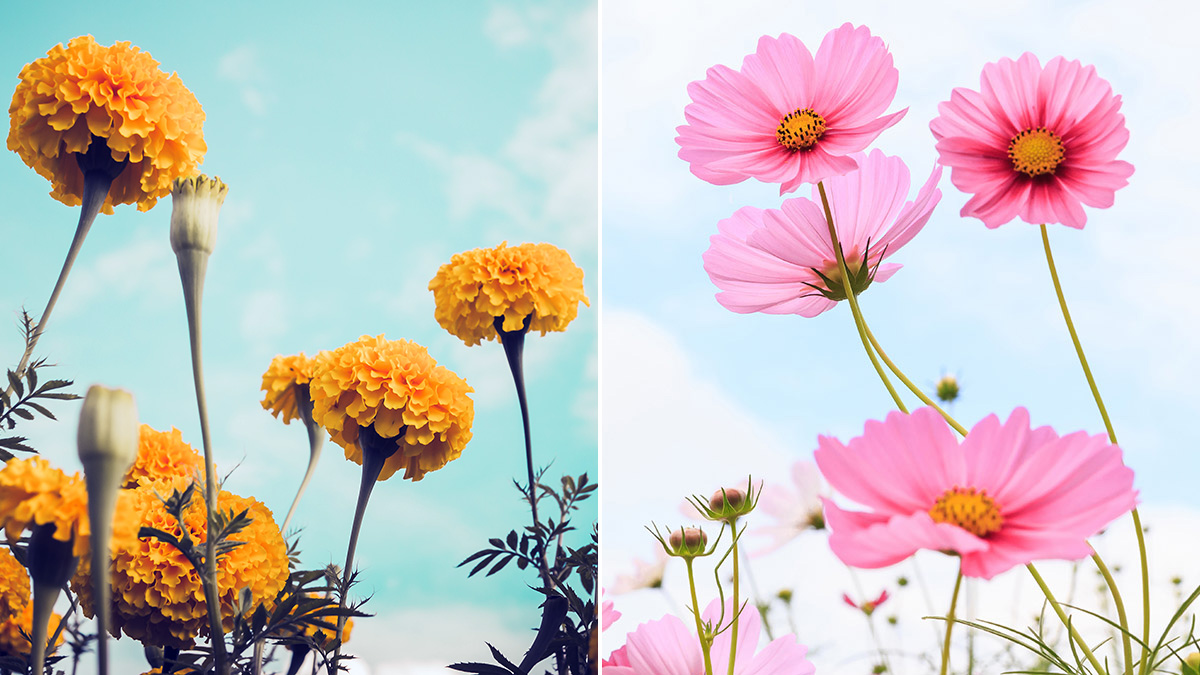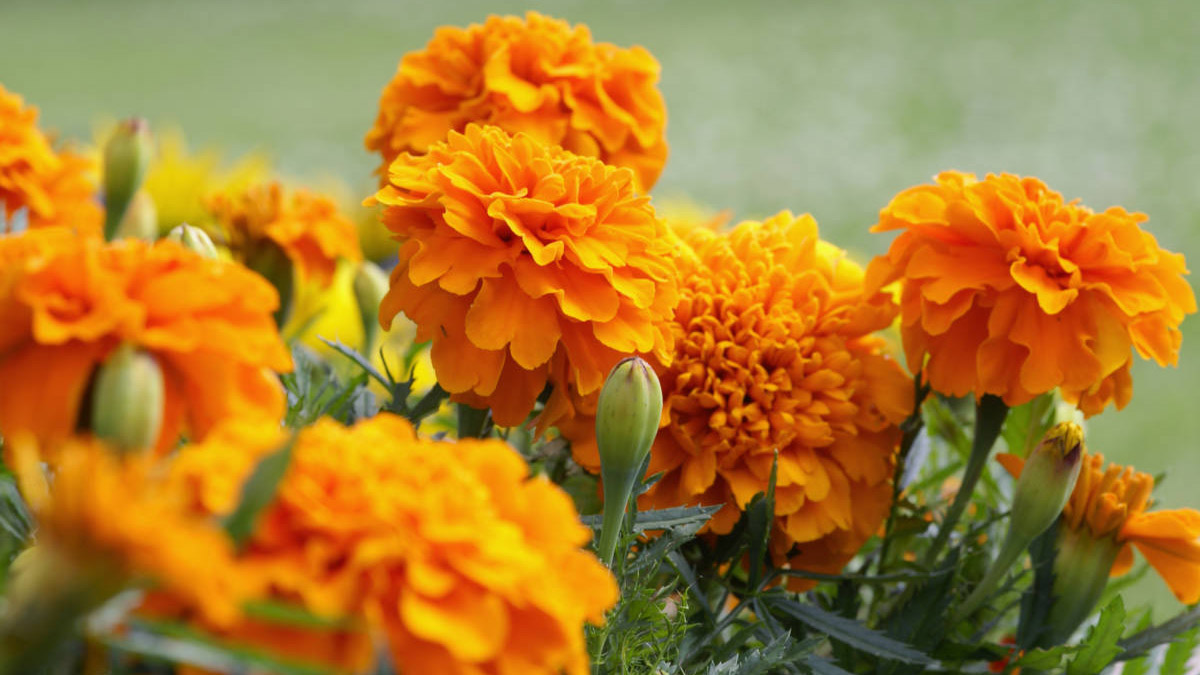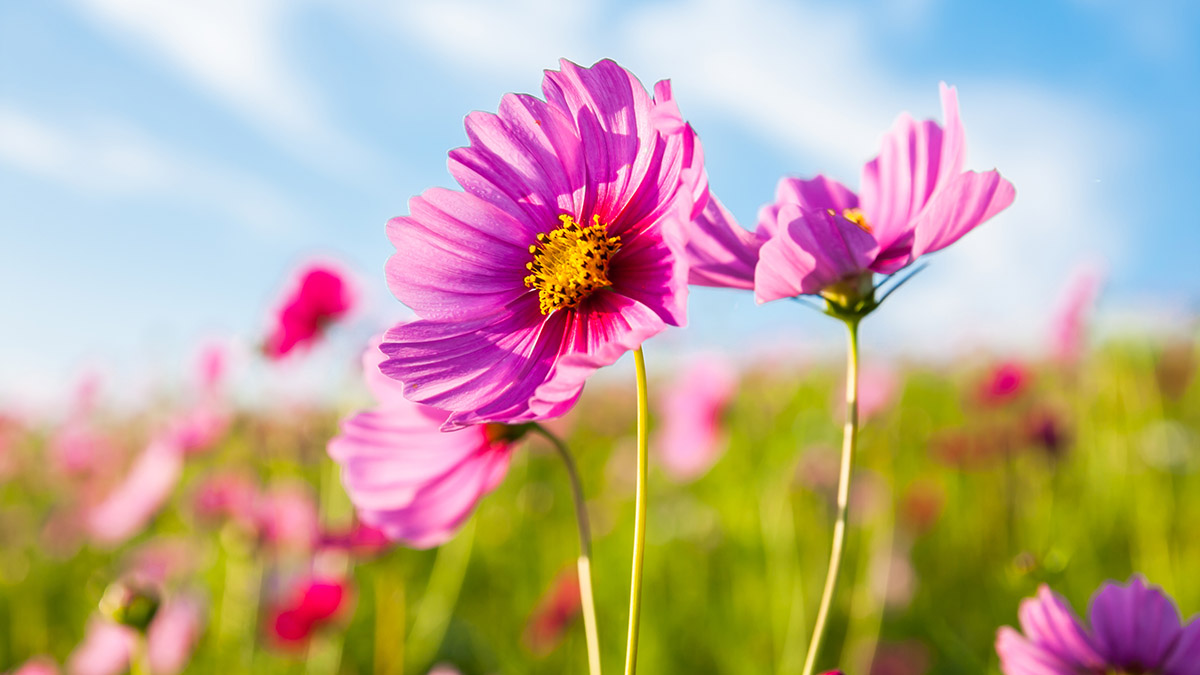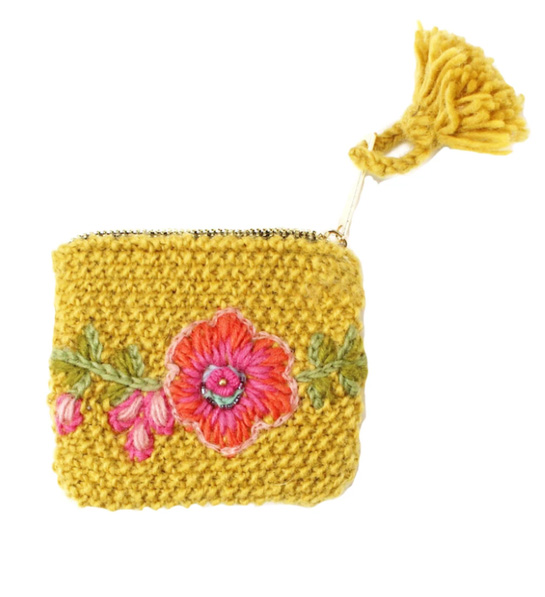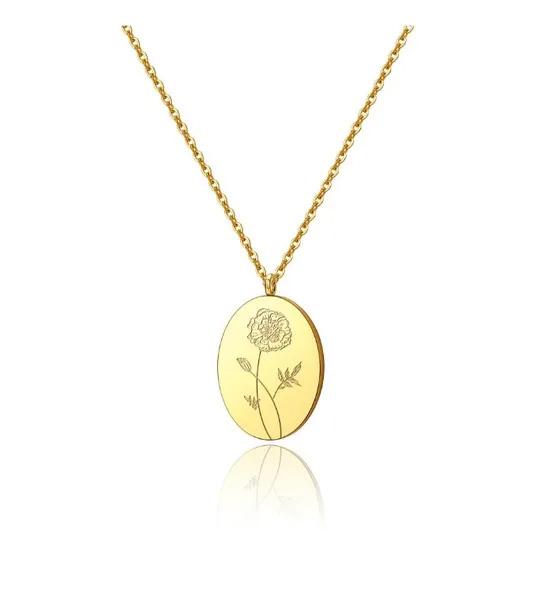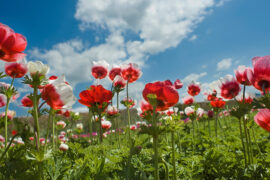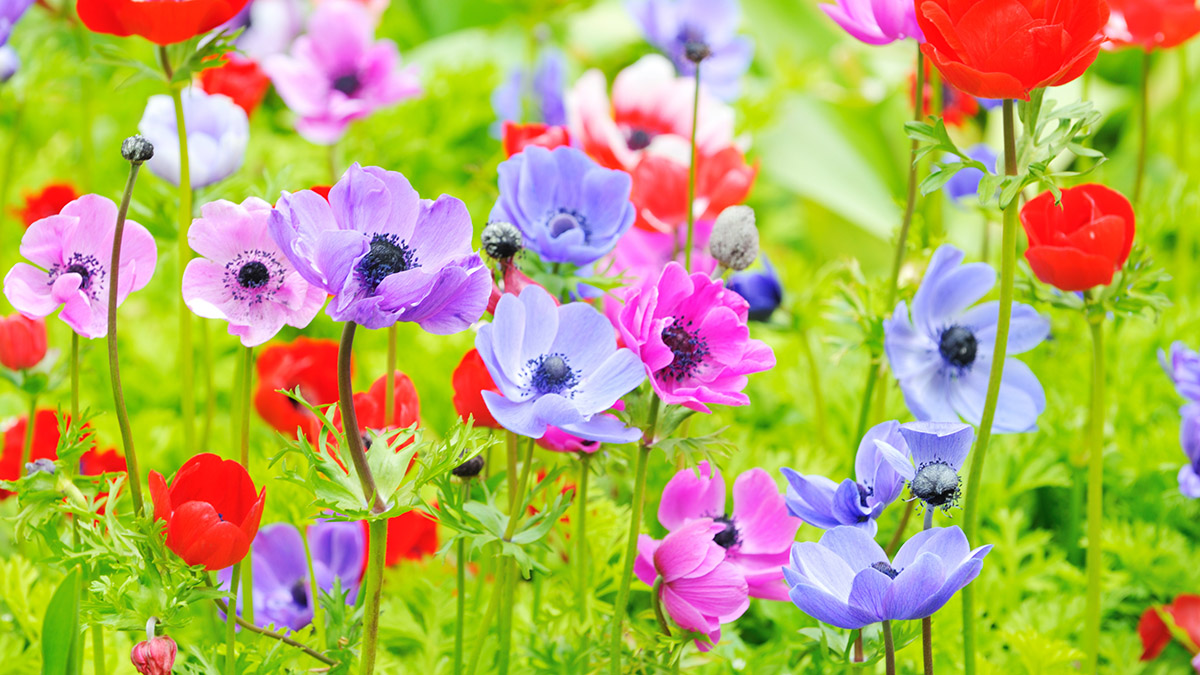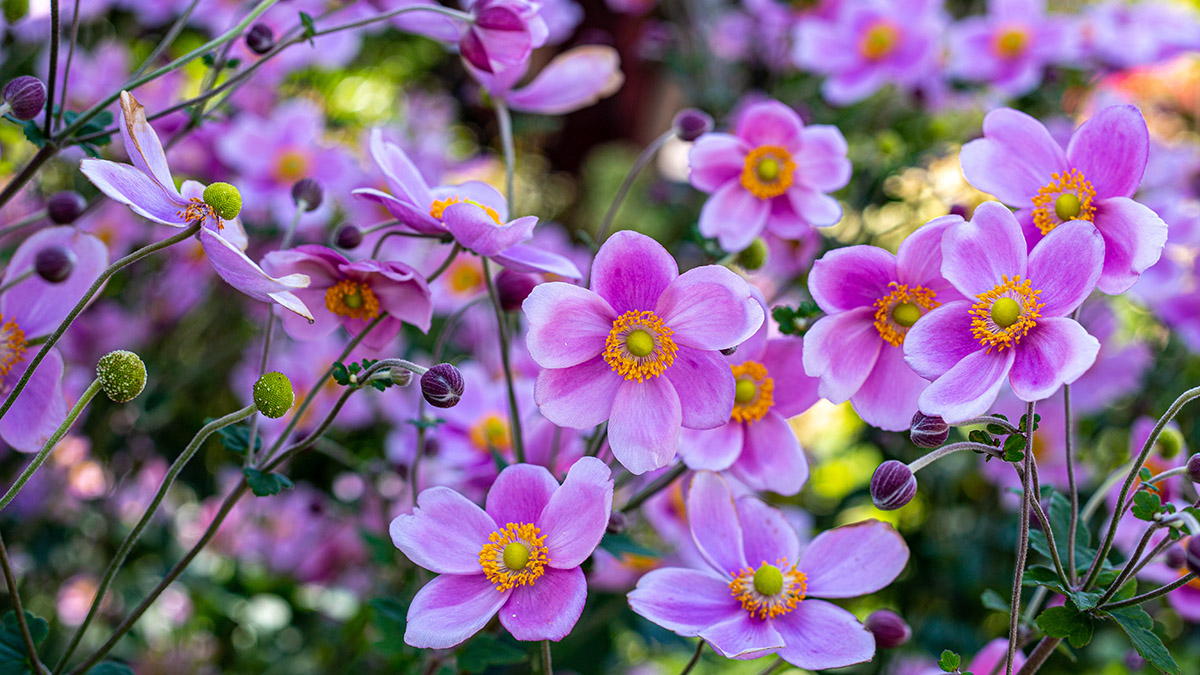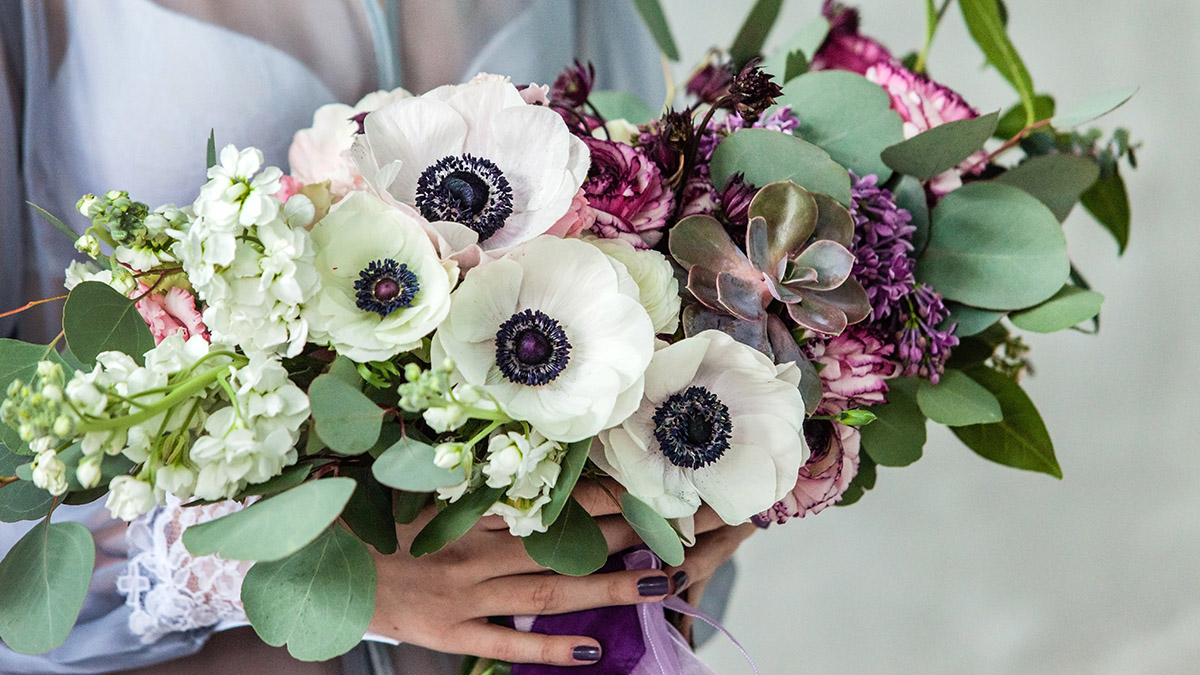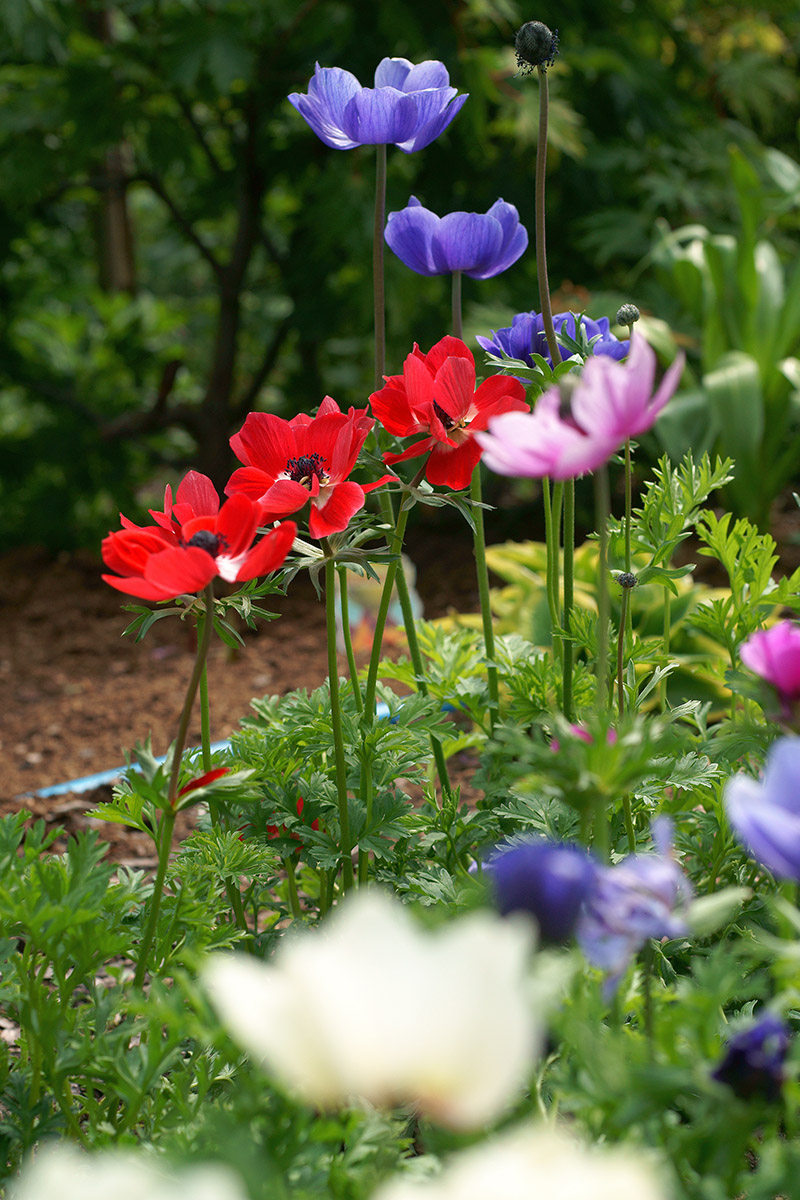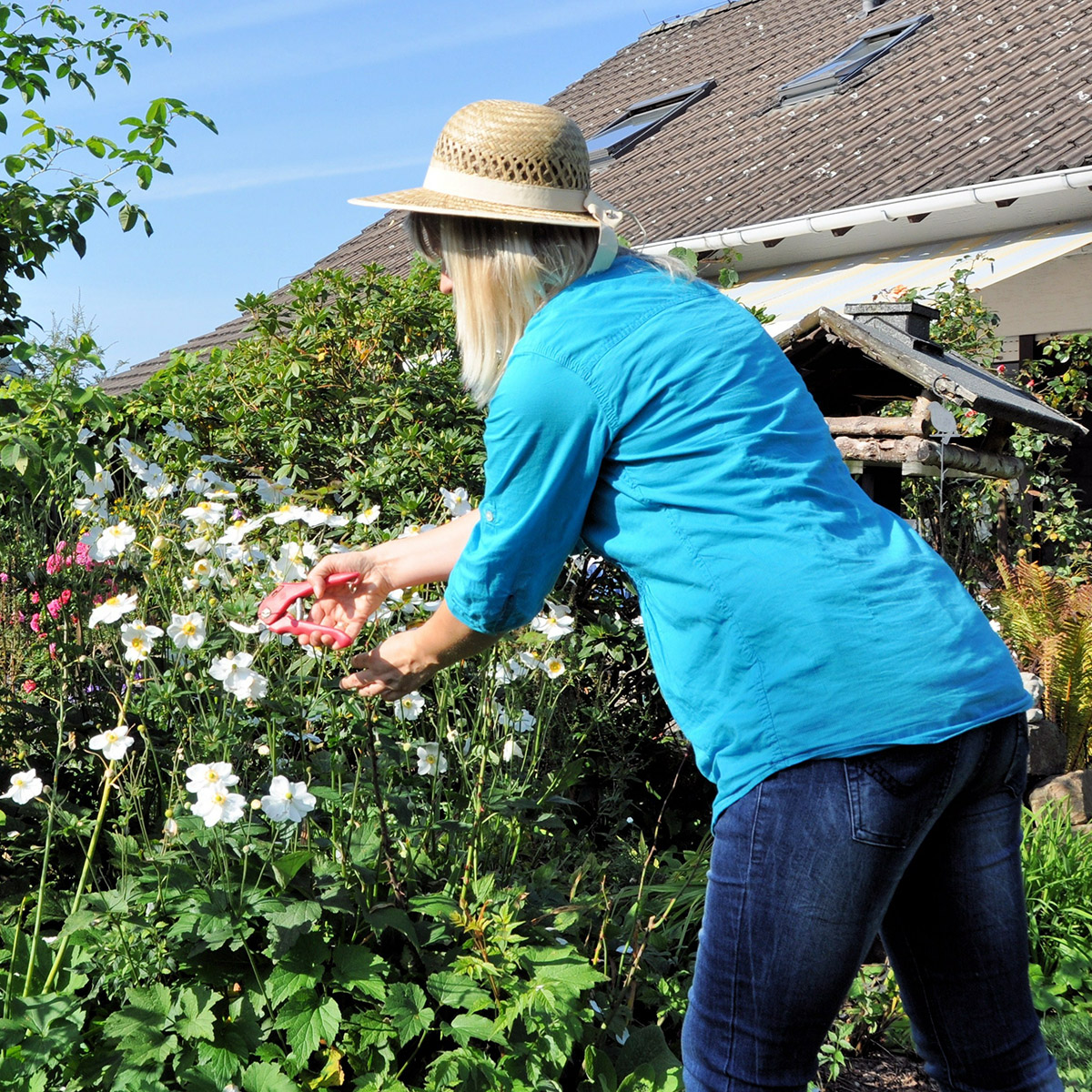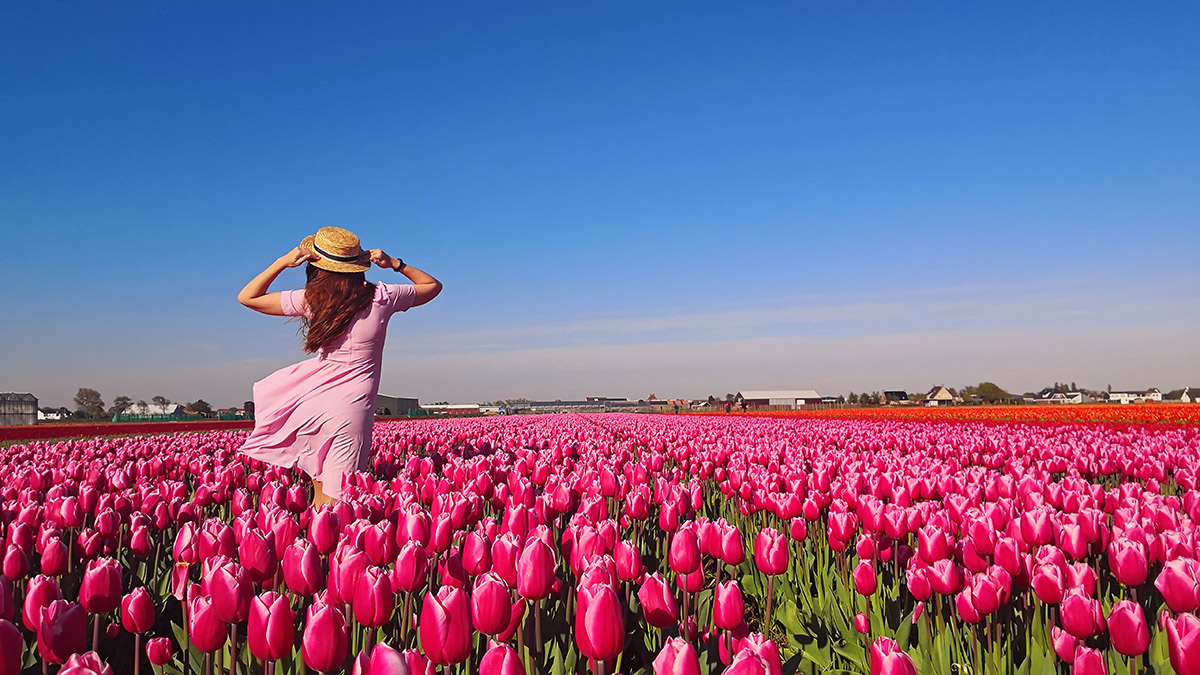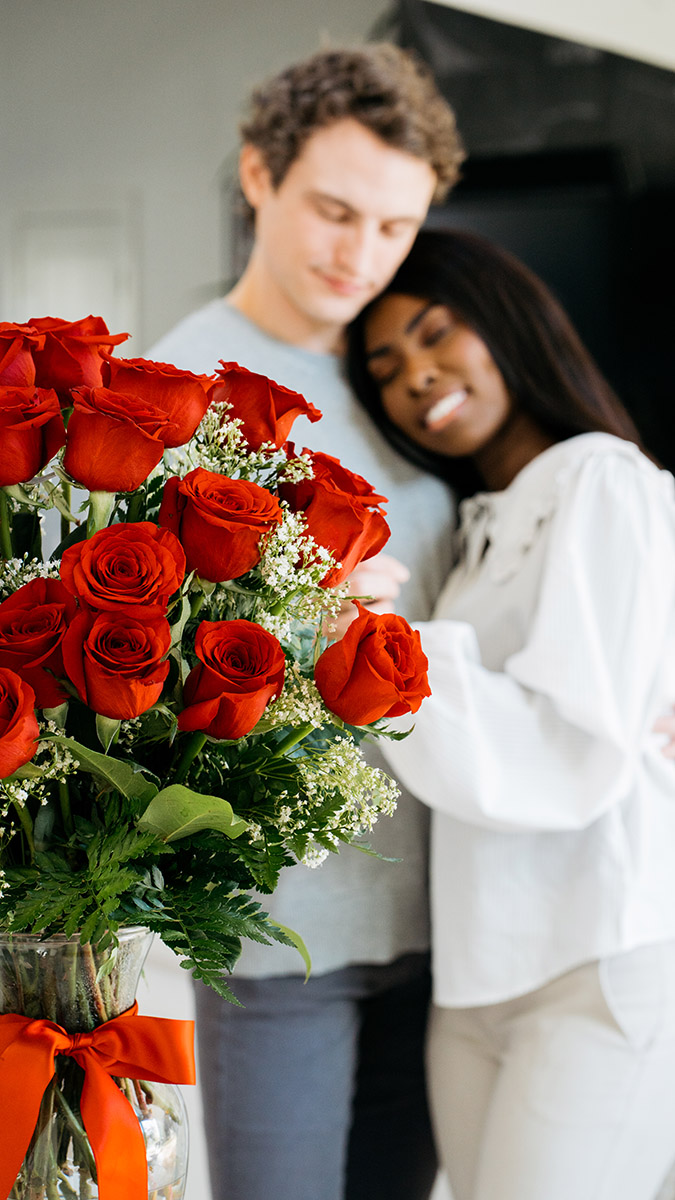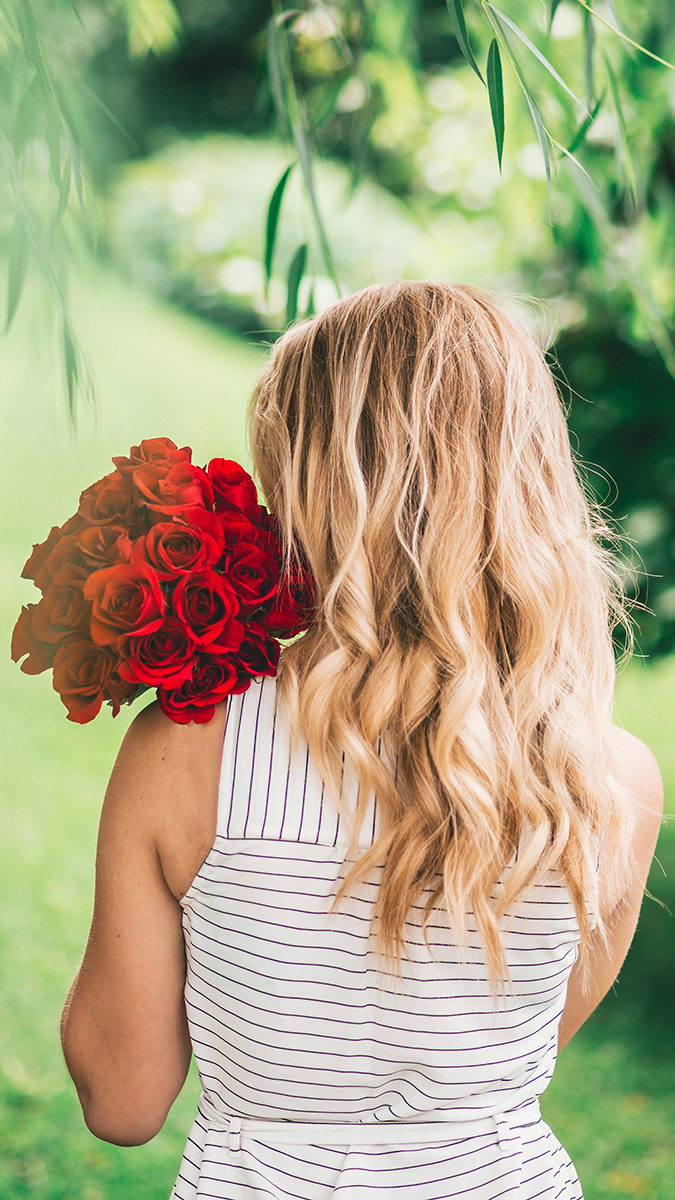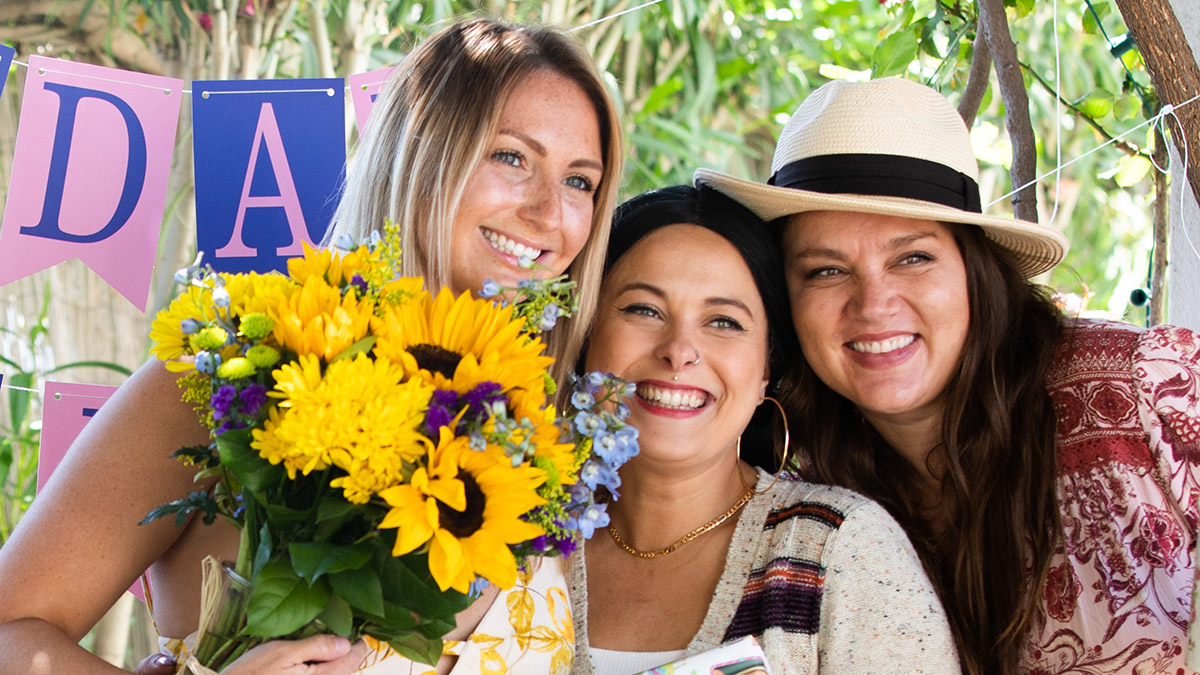White flowers, with their timeless elegance and beauty, have been favorites of gardeners for centuries. From delicate blossoms to showy clusters, these beloved blooms — whether adorning a wedding bouquet, garden border, or vase on your dining room table — can add a touch of serenity and sophistication to any floral arrangement or outdoor space.
Join us on a journey through the 25 most popular types of white flowers, and discover what makes them exude a classic charm that captivates the senses.
1. Rose (Rosa)
The classic rose comes in all types and colors, with each one carrying a different meaning; the white variety stands as the ultimate symbol of purity and innocence.
Sun exposure: Full sun
Soil needs: Well-drained, fertile soil
USDA hardiness zones: 5-9
Bloom time: Spring to fall
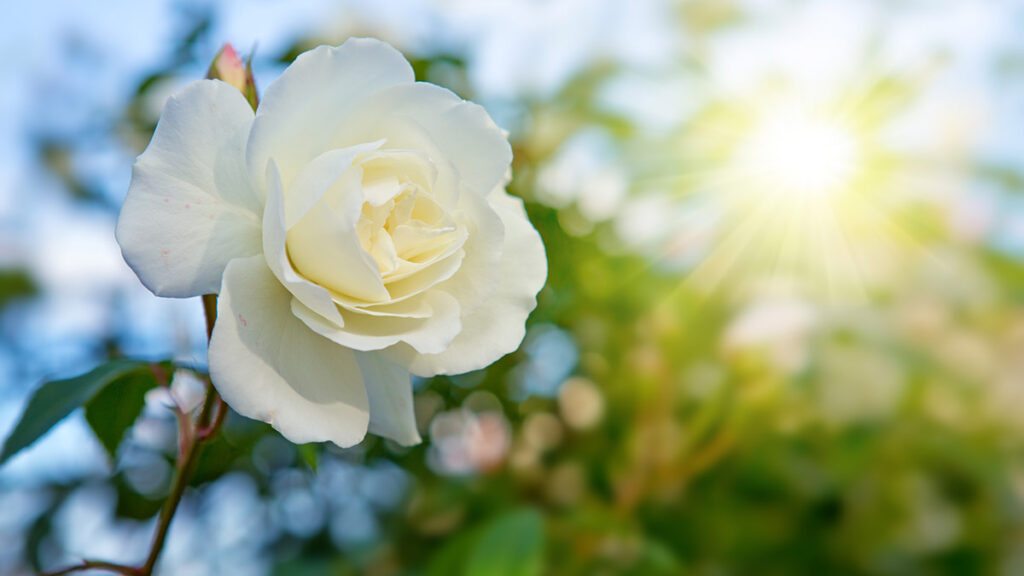
2. Calla lily (Zantedeschia aethiopica)
The calla lily, with its elegant, trumpet-shaped blooms, adds a touch of glamour and sophistication to any setting. Also known as an arum lily, this classic flower is associated with sympathy and rebirth, making it a popular choice for sympathy occasions.
Sun exposure: Partial to full shade
Soil needs: Well-drained, rich soil
USDA hardiness zones: 8-10
Bloom time: Late spring to early summer
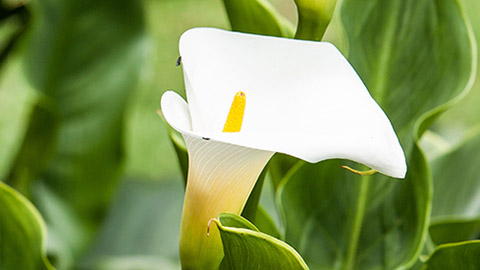
3. Daisy (Bellis perennis)
With its classic white petals and golden center, the daisy radiates simplicity and charm. This cheerful flower is easy to grow, making it a perfect pick for novice gardeners.
Sun exposure: Full sun
Soil needs: Well-drained soil
USDA hardiness zones: 4-9
Bloom time: Late spring to summer
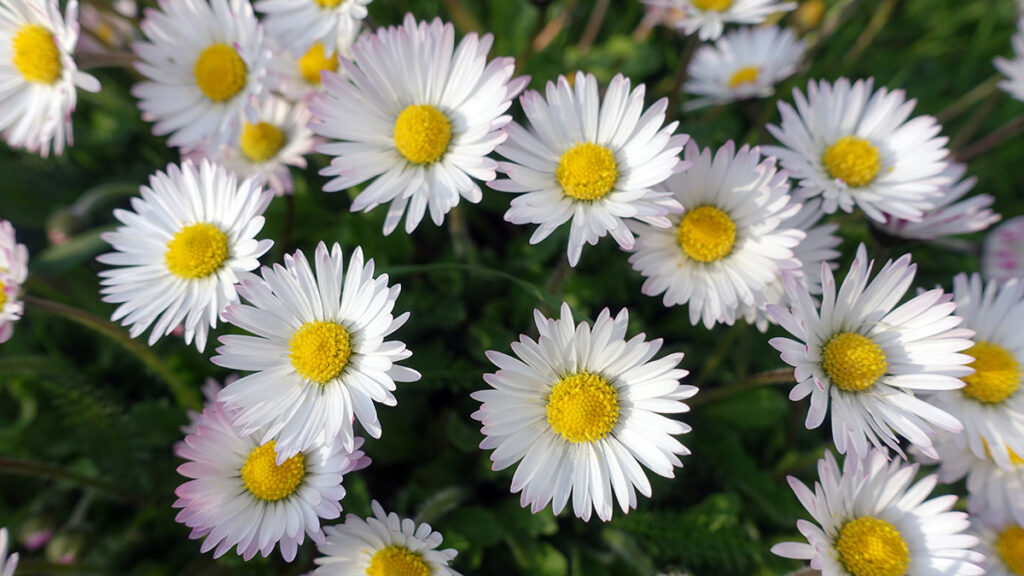
4. Magnolia (Magnolia spp.)
Boasting large, fragrant, and often showy white flowers, magnolias bring an air of Southern charm to any garden in which they’re planted.
Sun exposure: Full sun to partial shade
Soil needs: Well-drained, slightly acidic soil
USDA hardiness zones: 4-9
Bloom time: Late winter to early summer
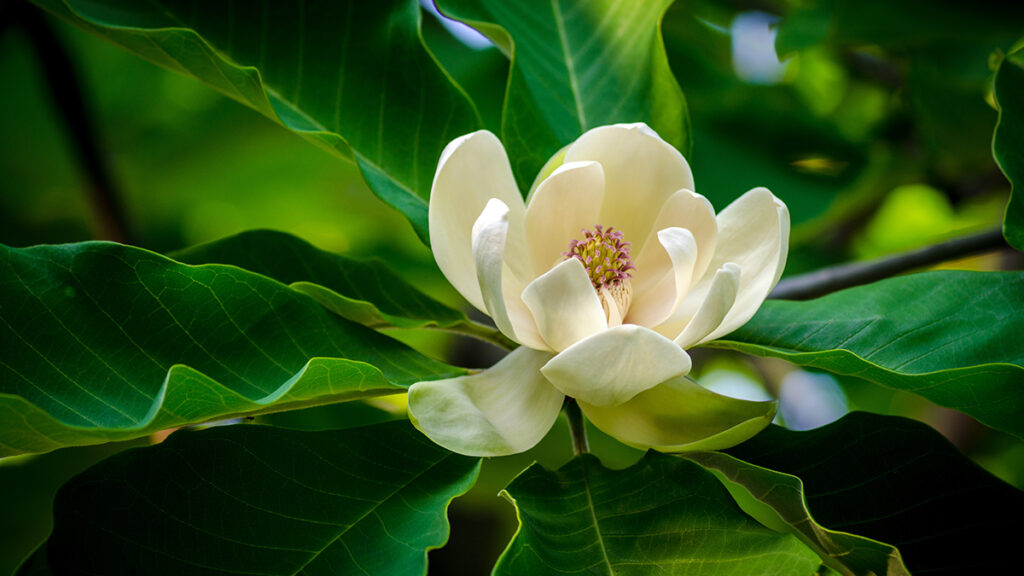
5. Tulip (Tulipa)
White tulips symbolize purity and forgiveness, making them an appropriate gift for someone celebrating a religious milestone or for a funeral service. Festivals around the world are dedicated to honoring this bulbous perennial.
Sun exposure: Full sun
Soil needs: Well-drained soil
USDA hardiness zones: 3-8
Bloom time: Spring
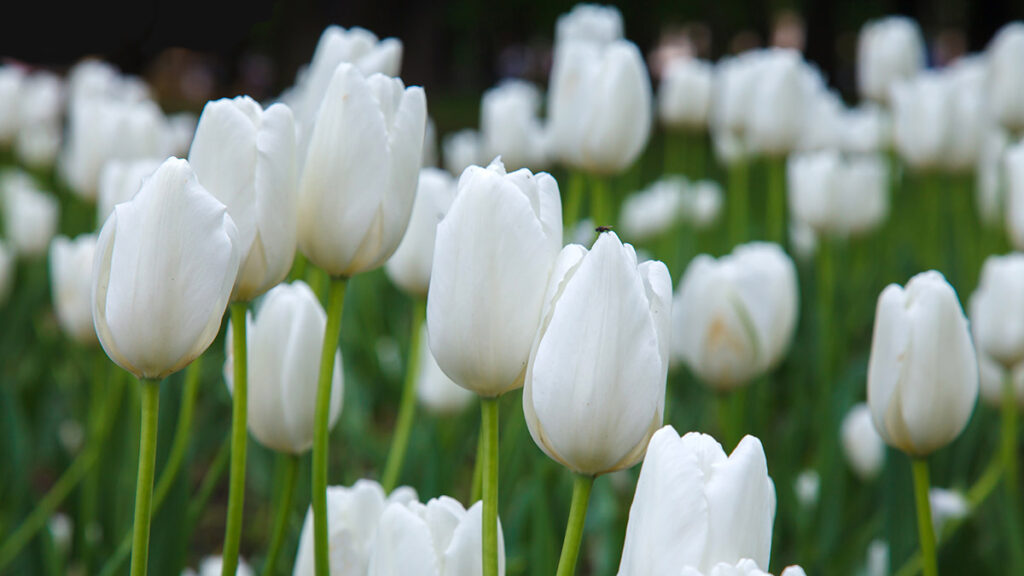
6. Hydrangea (Hydrangea spp.)
Hydrangeas produce large, globe-like clusters of flowers, and some varieties turn white as they mature. They’re most commonly associated with familial love and are one of the most popular choices for Mother’s Day arrangements.
Sun exposure: Part shade to full sun
Soil needs: Moist, well-drained soil
USDA hardiness zones: 3-9
Bloom time: Late spring to fall
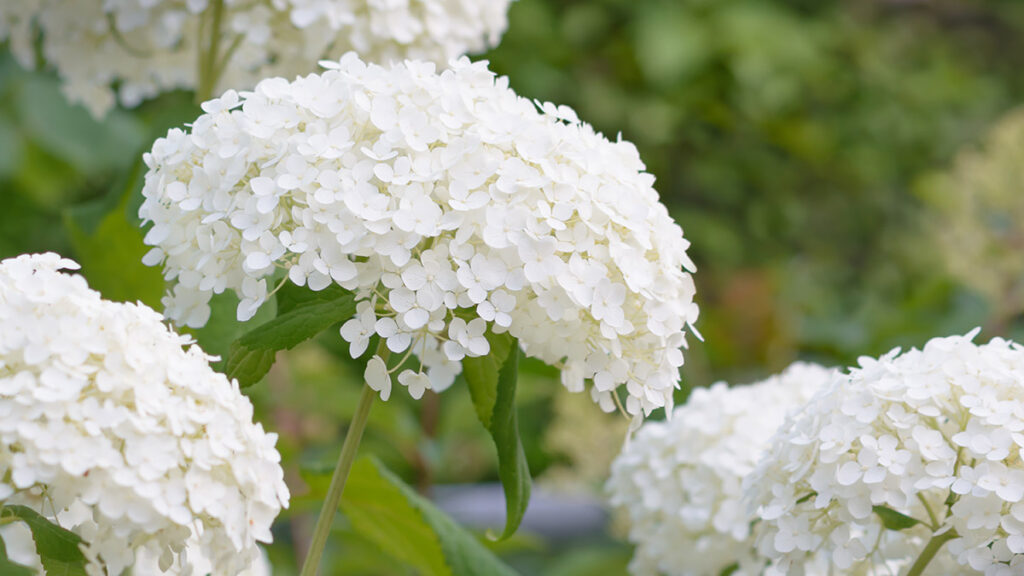
7. Lily of the valley (Convallaria majalis)
Delicate and fragrant, lily of the valley features small, bell-shaped flowers that dangle from arching stems. Its botanical name “majalis” means “of or belonging to May;” unsurprisingly, it is one of May’s birth flowers.
Sun exposure: Shade to part shade
Soil needs: Well-drained soil
USDA hardiness zones: 2-9
Bloom time: Late spring
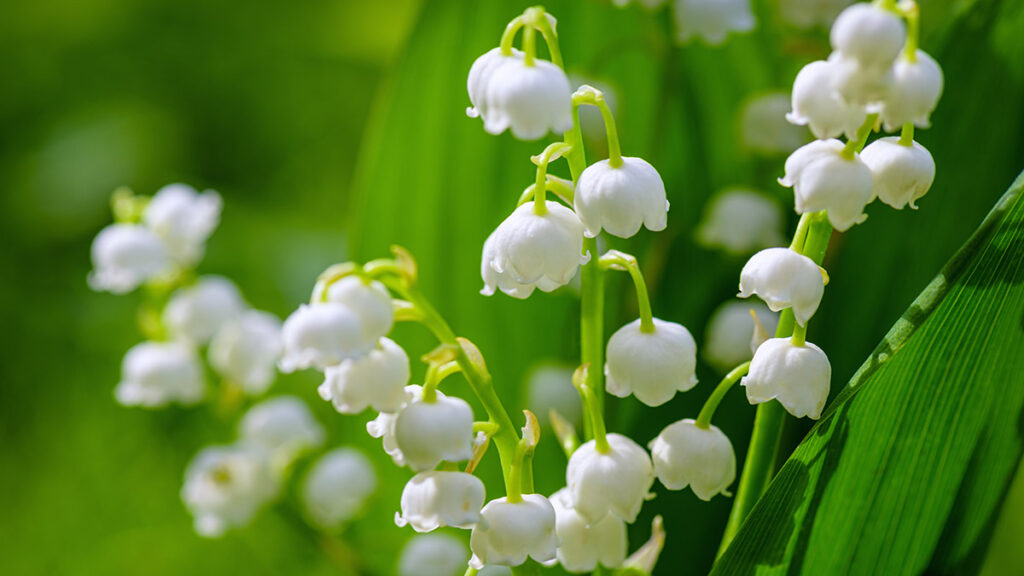
8. Peony (Paeonia)
The lush, full blossoms of the peony come in various shades, including pristine white. One of two November birth flowers, these large and extravagant blooms exude romance and charm, making them a popular choice for weddings and other special occasions.
Sun exposure: Full sun to part shade
Soil needs: Rich, well-drained soil
USDA hardiness zones: 3-8
Bloom time: Late spring to early summer
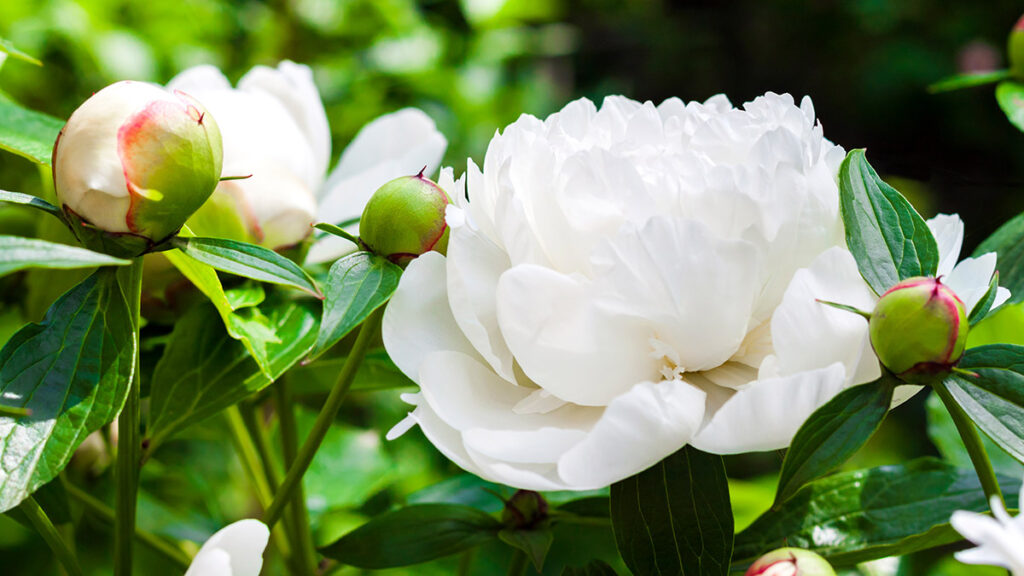
9. Camellia (Camellia spp.)
Camellias are evergreen shrubs known for their glossy leaves and showy, waxy white flowers. Staples of gardens in the southern United States, they are the state flower of Alabama.
Sun exposure: Part shade to full shade
Soil needs: Well-drained, slightly acidic soil
USDA hardiness zones: 6-10
Bloom time: Fall to early spring
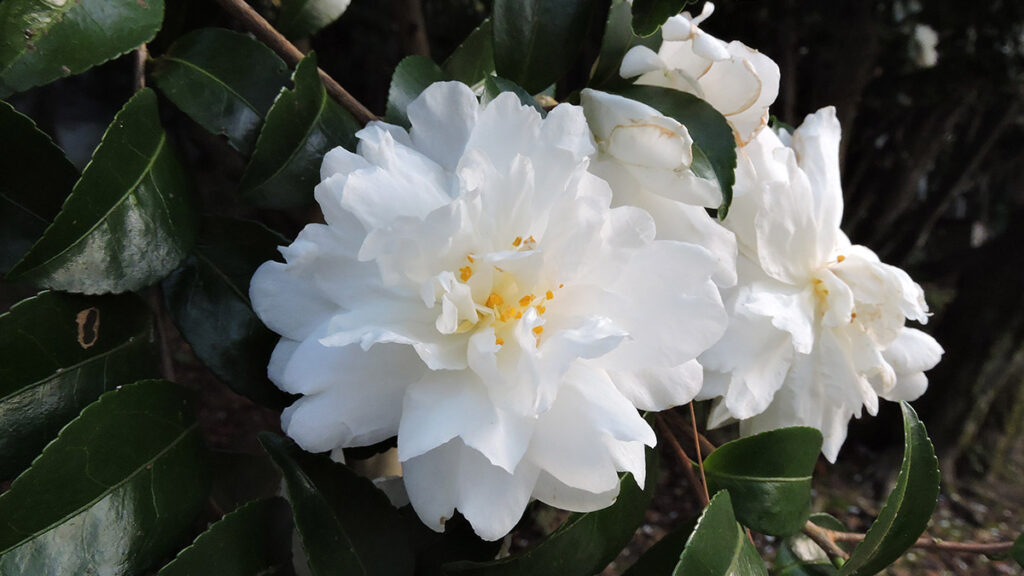
10. Orchid (Orchidaceae)
The exotic, elegant orchid boasts intricate blooms that represent beauty and refinement; the white types of these flowers, however, are more closely associated with grace and humility.
Sun exposure: Indirect light
Soil needs: Well-draining orchid mix
USDA hardiness zones: Varies (often grown as houseplants)
Bloom time: Varies depending on the species
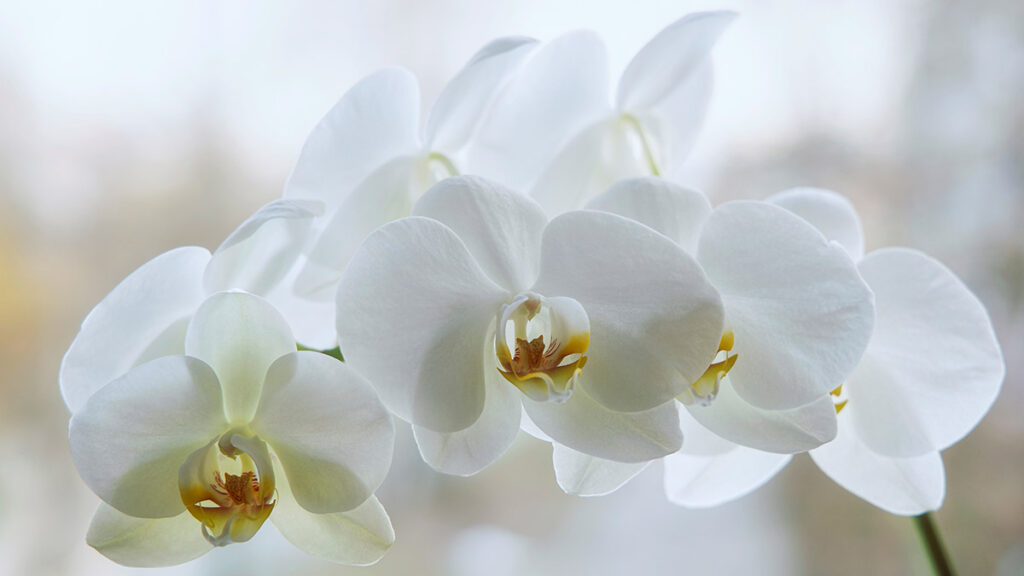
11. Carnation (Dianthus caryophyllus)
Carnations are available in a wide variety of shades, including pure white. These classic and long-lasting flowers symbolize love and purity.
Sun exposure: Full sun
Soil needs: Well-drained soil
USDA hardiness zones: 5-10
Bloom time: Late spring to early summer
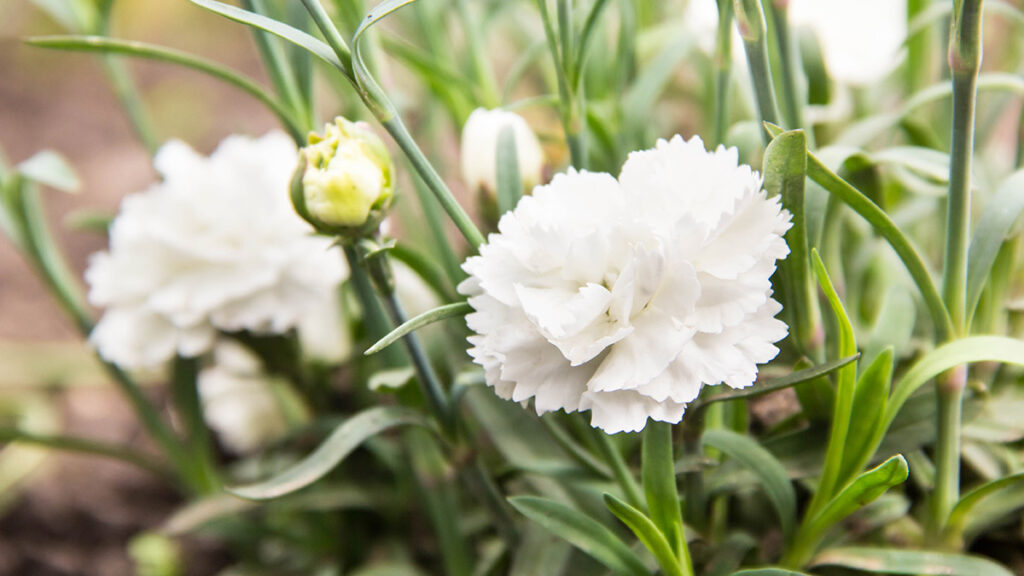
12. Daffodil (Narcissus)
Daffodils, with their white or yellow petals and trumpet-shaped centers, herald the arrival of spring, making these iconic blooms the perfect choice to be one of March’s birth flowers.
Sun exposure: Full sun to part shade
Soil needs: Well-drained soil
USDA hardiness zones: 3-8
Bloom time: Early spring
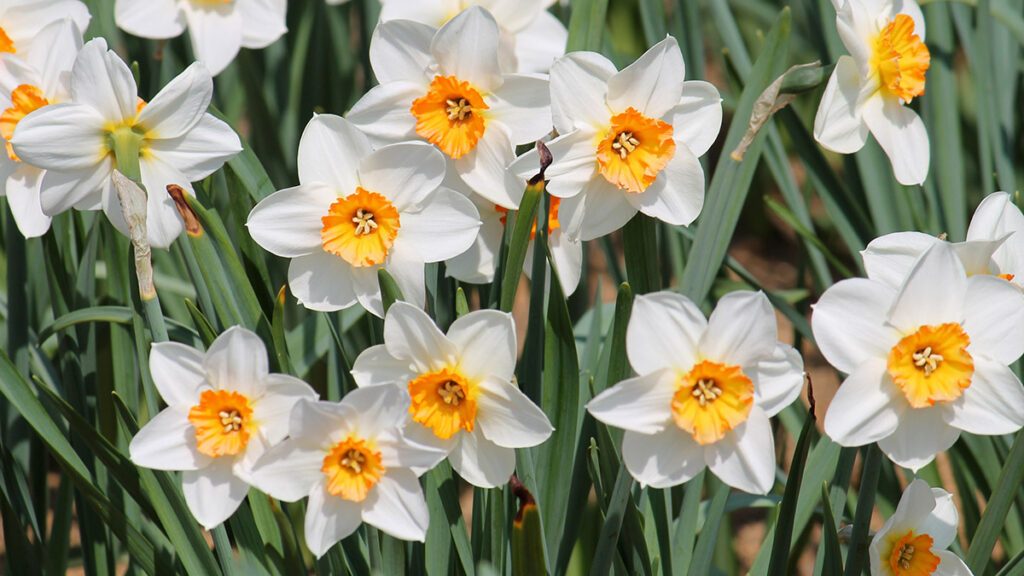
Best white flower gift ideas
13. Cherry blossom (Prunus serrulata)
The cherry blossom tree produces clusters of delicate white flowers, creating a breathtaking spring spectacle. Festivals are held all over the country in honor of this much-awaited annual occasion.
Sun exposure: Full sun to part shade
Soil needs: Well-drained soil
USDA hardiness zones: 5-9
Bloom time: Spring
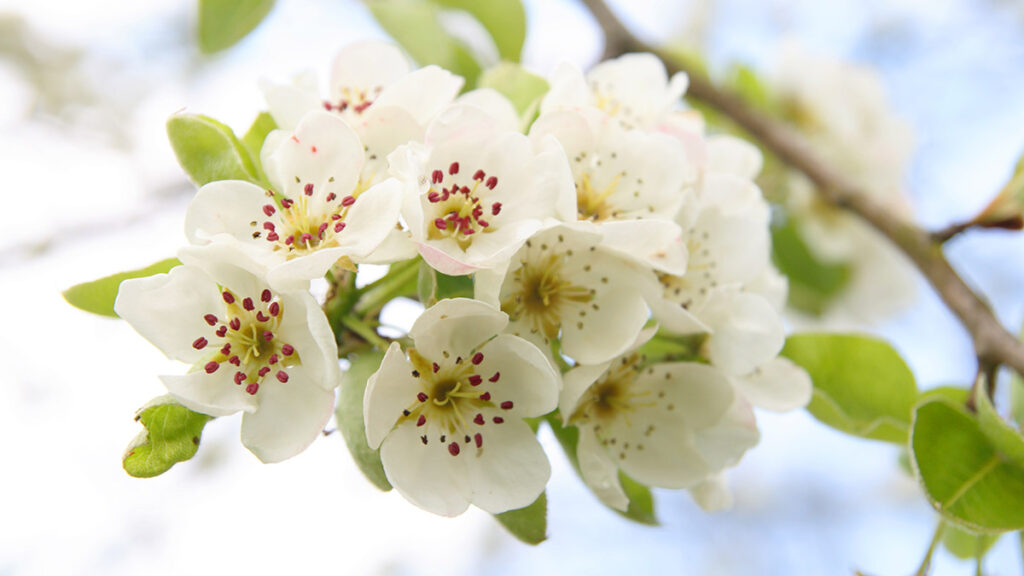
14. Dogwood (Cornus florida)
Dogwood trees display showy white or pink blooms and are a staple in spring landscapes. The flowering dogwood is the state flower of North Carolina.
Sun exposure: Part shade to full sun
Soil needs: Well-drained soil
USDA hardiness zones: 5-9
Bloom time: Spring
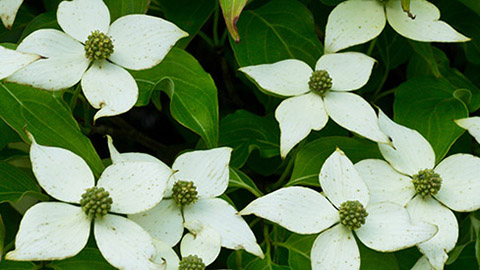
15. Hellebore (Helleborus)
Hellebores, also known as Lenten roses or Christmas roses, are early-blooming perennials that produce nodding, cup-shaped flowers. Be sure to keep children and pets away from hellebore, as all parts of the plant are poisonous.
Sun exposure: Part shade
Soil needs: Well-drained, rich soil
USDA hardiness zones: 4-9
Bloom time: Late winter to early spring
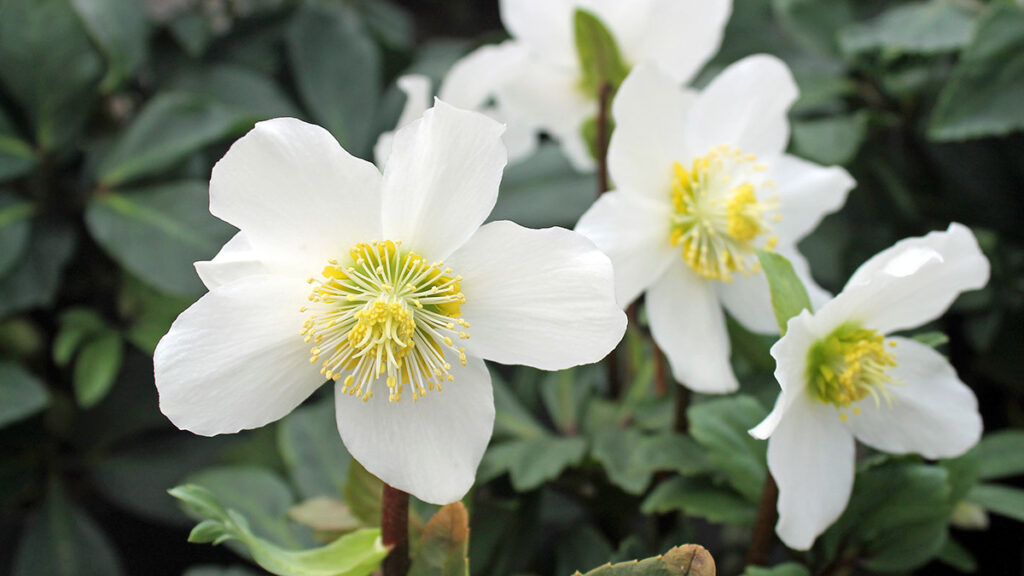
16. Anemone (Anemone spp.)
Anemones feature delicate, showy blooms on wiry stems. Some white anemone cultivars have names like Mistral Bianco Centro Nero, Mount Everest, and De Caen The Bride.
Sun exposure: Full sun to part shade
Soil needs: Well-drained soil
USDA hardiness zones: 4-8
Bloom time: Late spring to early summer
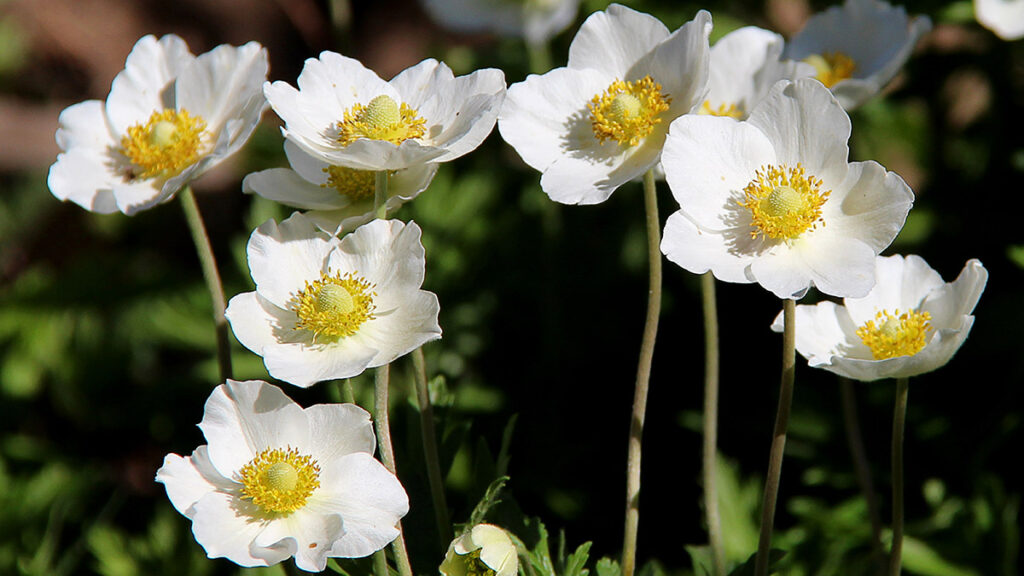
17. Star jasmine (Trachelospermum asiaticum)
Star jasmine is a fragrant evergreen vine with star-shaped white flowers. This climbing perennial grows both outward and upward and, thus, is best suited to be planted near patios, terraces, and entryways.
Sun exposure: Full sun to part shade
Soil needs: Well-drained soil
USDA hardiness zones: 8-11
Bloom time: Late spring to summer
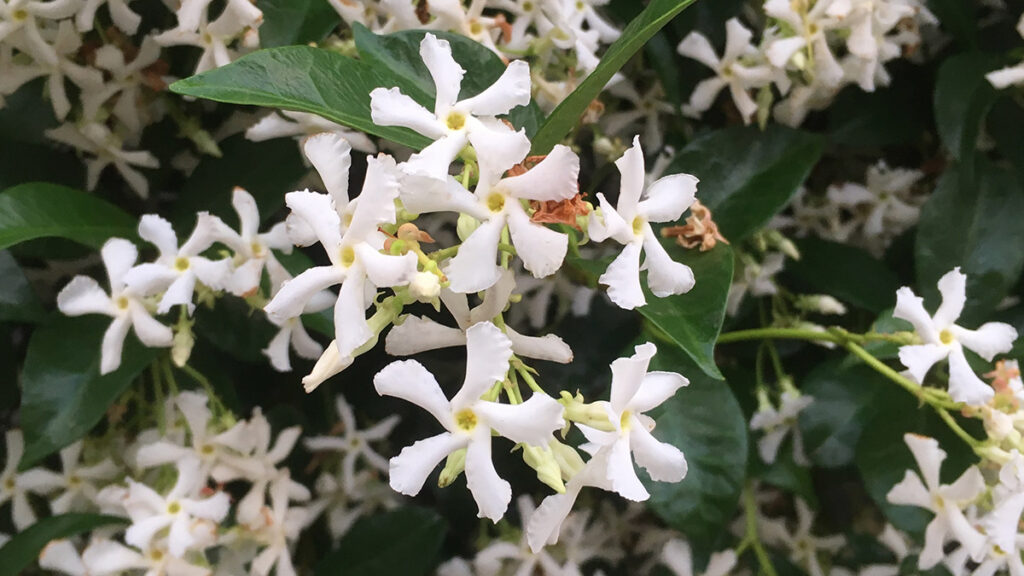
18. African lily (Agapanthus africanus)
Also known as lily of the Nile or simply agapanthus, African lilies produce clusters of globe-shaped white or blue flowers. These perennial evergreens make showy and exotic additions to a garden as accent plants or in a grouping.
Sun exposure: Full sun to part shade
Soil needs: Well-drained soil
USDA hardiness zones: 7-11
Bloom time: Summer
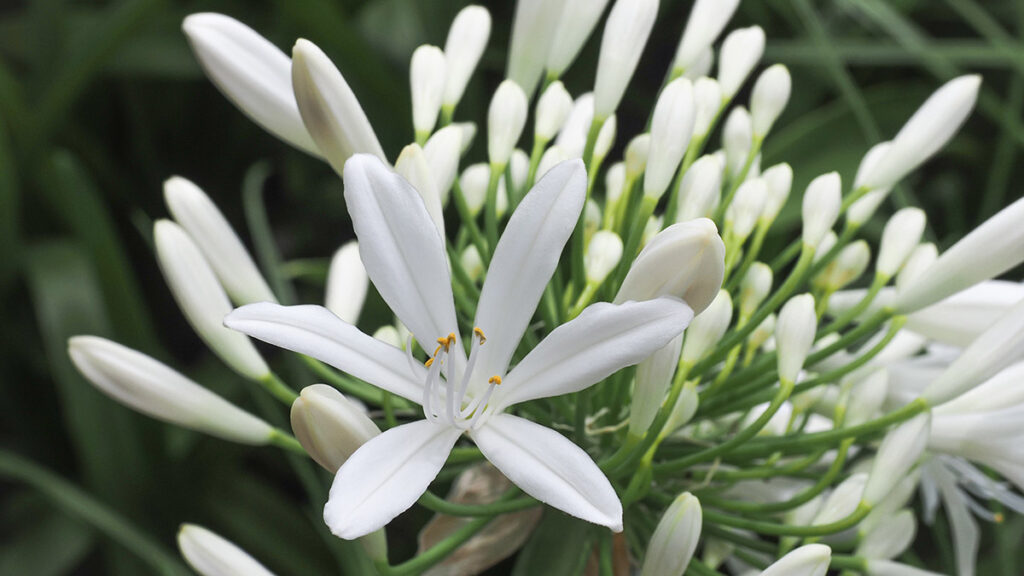
19. Foxglove (Digitalis purpurea)
Foxgloves feature tall spikes adorned with tubular, bell-shaped flowers. A favorite of bees and hummingbirds, this biennial plant adds vertical interest to gardens.
Sun exposure: Part shade to full sun
Soil needs: Well-drained soil
USDA hardiness zones: 4-8
Bloom time: Late spring to early summer
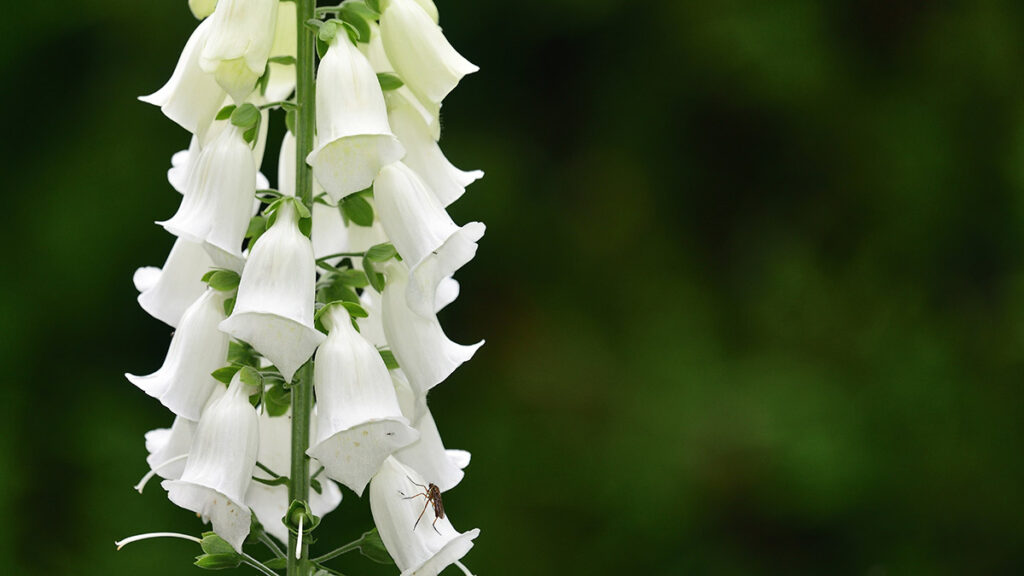
20. Alstroemeria (Alstroemeria spp.)
Alstroemeria, also known as Peruvian lily or lily of the Incas, produces clusters of vibrant, trumpet-shaped flowers that come in a wide variety of colors, including white. As symbols of mutual support and devotion, they are frequently gifted to friends in mixed bouquets.
Sun exposure: Full sun to part shade
Soil needs: Well-drained soil
USDA hardiness zones: 8-10
Bloom time: Late spring to early summer
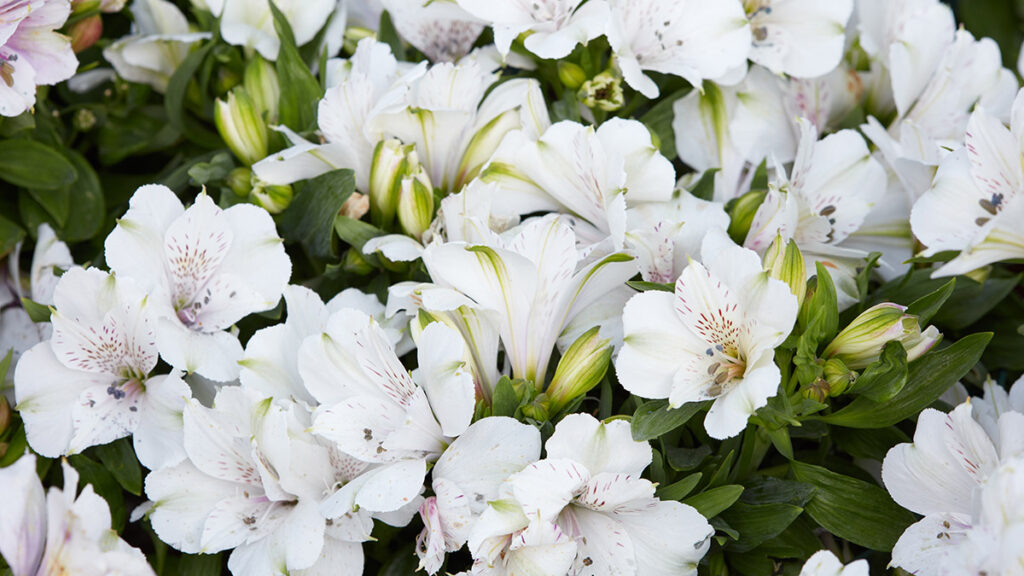
21. Snowdrop (Galanthus nivalis)
Snowdrops are small, nodding flowers that emerge in late winter, often pushing through the snow. Appropriately, they are one of January’s birth flowers.
Sun exposure: Part shade to full sun
Soil needs: Well-drained soil
USDA hardiness zones: 3-7
Bloom time: Late winter to early spring
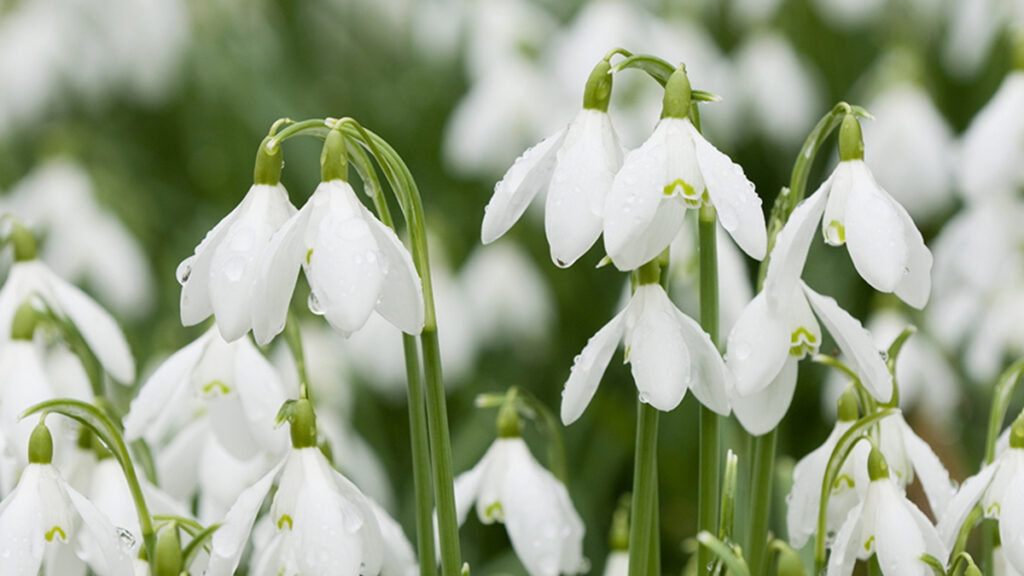
22. Bleeding heart (Dicentra spectabilis)
Bleeding hearts have distinct heart-shaped blossoms on arching stems, creating a romantic and whimsical look. These delicate blooms are one of the best flowers to grow in shady conditions.
Sun exposure: Part shade
Soil needs: Moist, well-drained soil
USDA hardiness zones: 3-9
Bloom time: Late spring to early summer
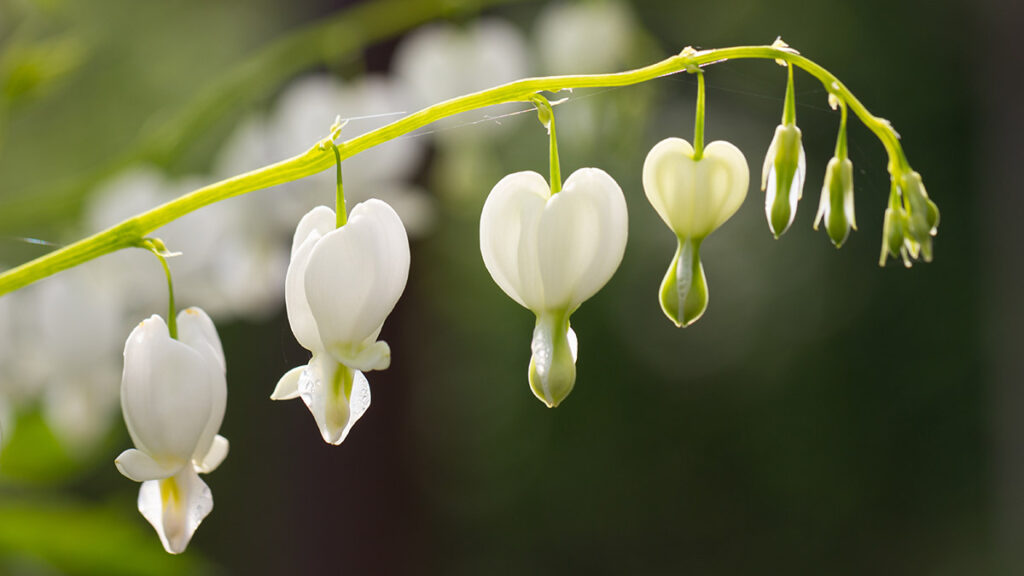
23. Clematis (Clematis spp.)
Clematis vines produce large, star-shaped flowers in various colors, including white. These climbers are perfect for trellises, fences, or arbors, but be warned: They are high maintenance and require a lot of pruning.
Sun exposure: Full sun to part shade
Soil needs: Well-drained soil
USDA hardiness zones: 4-9
Bloom time: Spring to fall
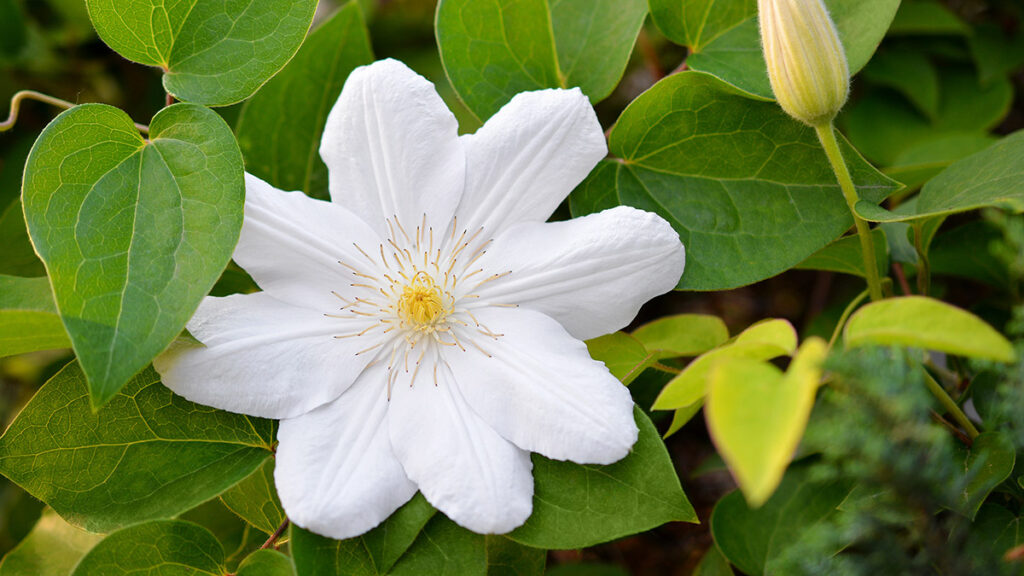
24. Moonflower (Ipomoea alba)
Moonflowers, with their fragrant, large, white blooms, open in the evening, creating a magical garden experience. Plant this fast-growing perennial vine alongside fences, walls, or pergolas.
Sun exposure: Full sun
Soil needs: Well-drained soil
USDA hardiness zones: 10-12
Bloom time: Late summer to early fall
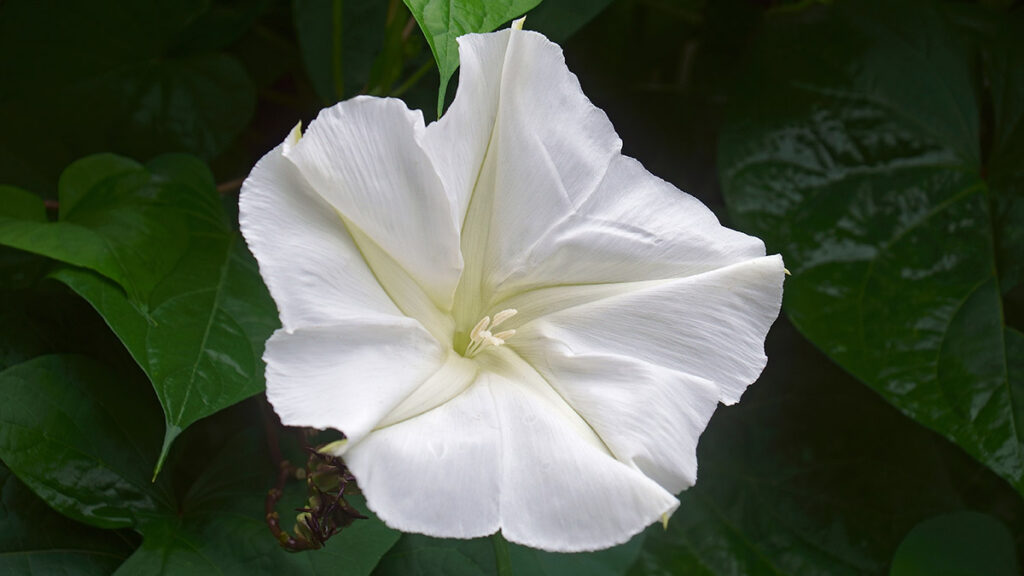
25. Shasta daisy (Leucanthemum x superbum)
Shasta daisies are perennial favorites with large, white petals surrounding golden centers, creating a classic look. This herbaceous flower is a horticultural hybrid, named for Mount Shasta in California.
Sun exposure: Full sun
Soil needs: Well-drained soil
USDA hardiness zones: 5-9
Bloom time: Summer
